Mt. Kilimanjaro is the tallest mountain in Africa and the highest single free-standing mountain above sea level in the world at 19,341 ft. It is also called the “Roof of Africa” It was exciting to climb Kilimanjaro.
Kilimanjaro is located in the northern part of Tanzania,near the Kenya border.
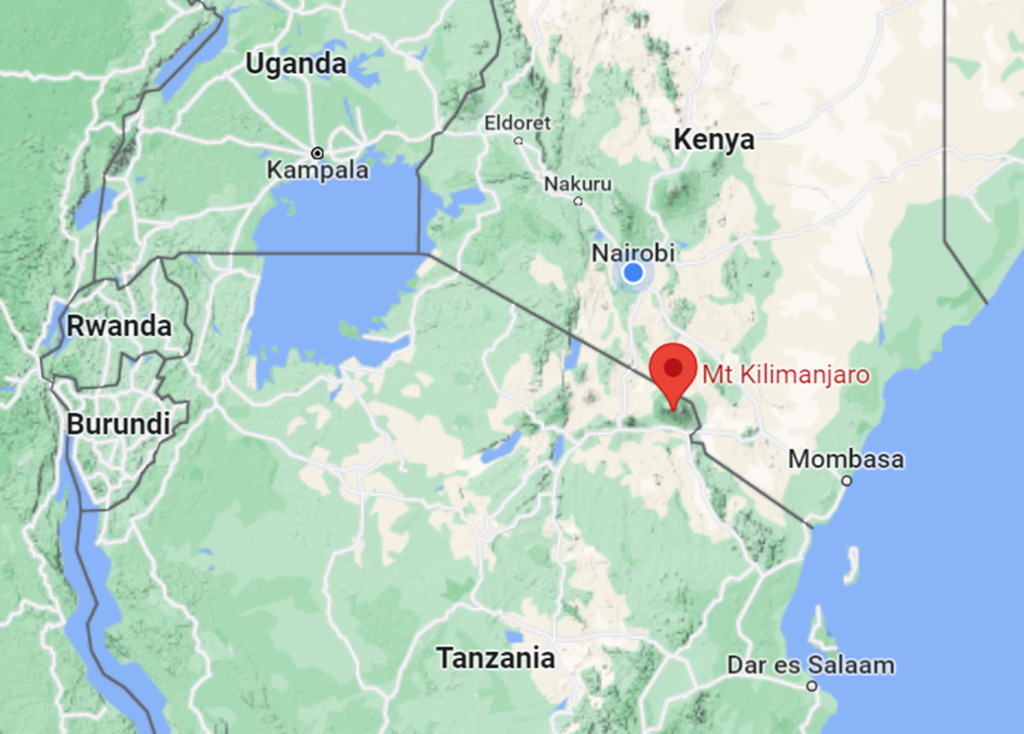
Trek Overview
Mount Kilimanjaro is home to 5 unique climate zones – all of which hikers pass through on their climb up to the summit, Uhuru Peak!
- Cultivation Zone (lowest)
- Rainforest Zone
- Heather and Moorland Zone
- Alpine Desert Zone
- Arctic Zone (highest)
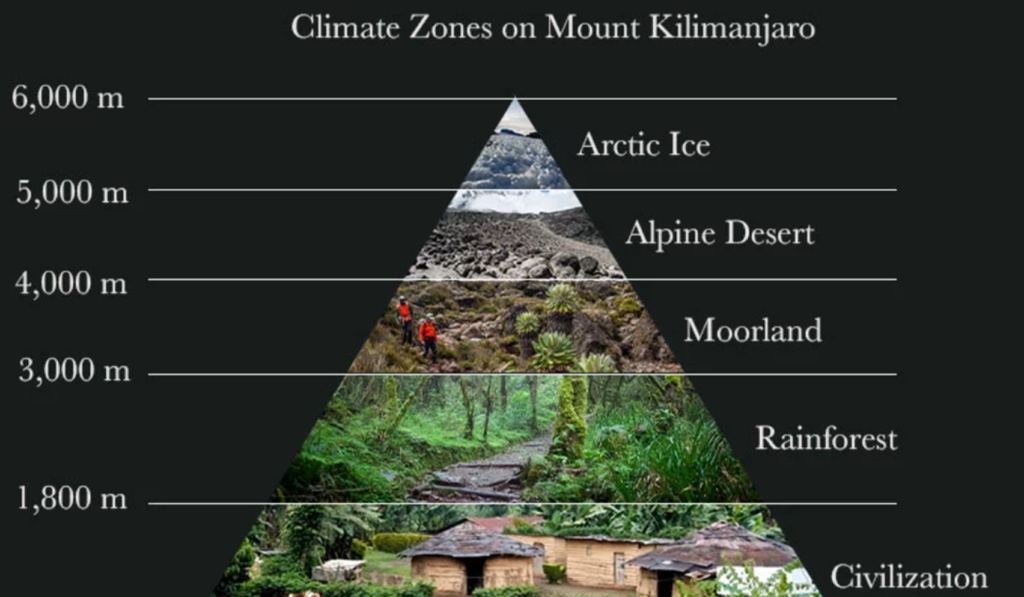
Our team had 29 members. Therefore, we called our team “The 29ers”.
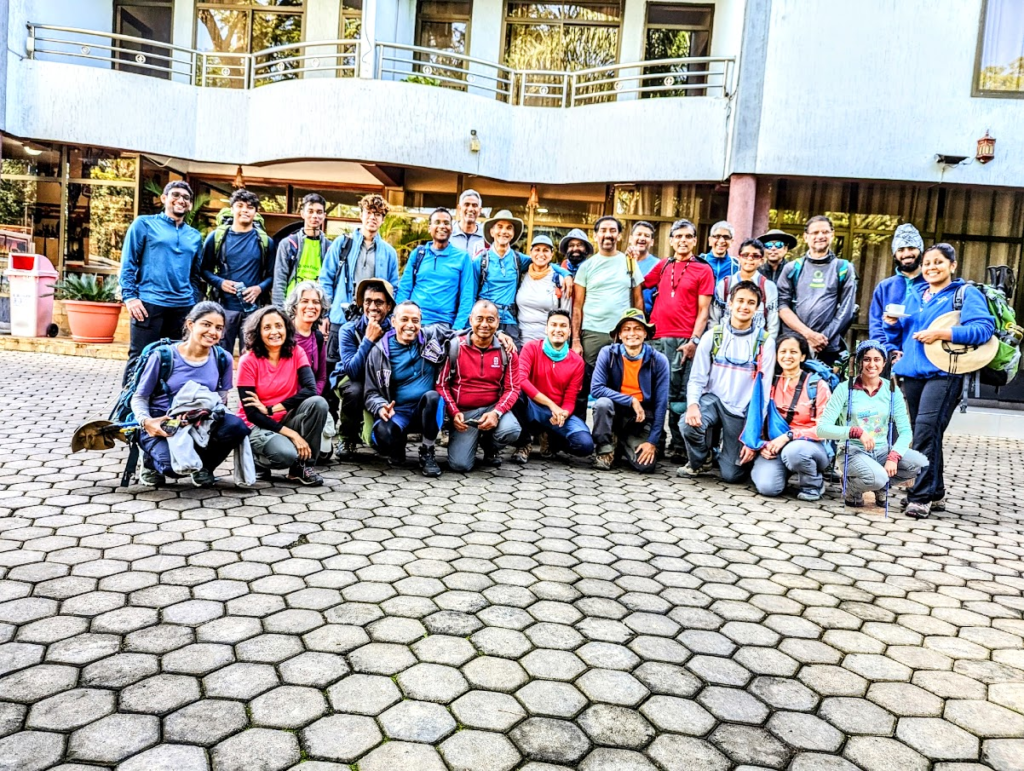
The team consisted of alumni from IIT Kanpur 1990 graduates and their families. The team consisted of the following members:
- Rajeev Ranjan, Sandeep Trivedi, Amit Baranwal
- Amitabh Gupta, Madhukiran Alur, Sitanshu Seth
- Sushil Ranjan, Jack Debbaruah
- Inder, Reshma, Sufi, Ronak Monga (family)
- Meenal, Neel Patwardhan (mother-son)
- Sumeet, Sahil Agrawal (father-son)
- Pravin, Nidhi Bhagwat (father-daughter)
- Samir, Anu, Sahil Palnitkar (father-mother-son)
- Ramesh Viswanathan, Akshay Ramesh (father-son)
- Ashutosh, Meenal, Atharv, Vidit (family)
- Arun Kumar, Priti Gairola (husband-wife)
There are more direct routes to climb the mountain. However, the Machame route traverses the mountain and takes a much more gradual route to allow for better acclimatization. It has an 84% success rate with an 8 day itinerary. Therefore, that was our choice.
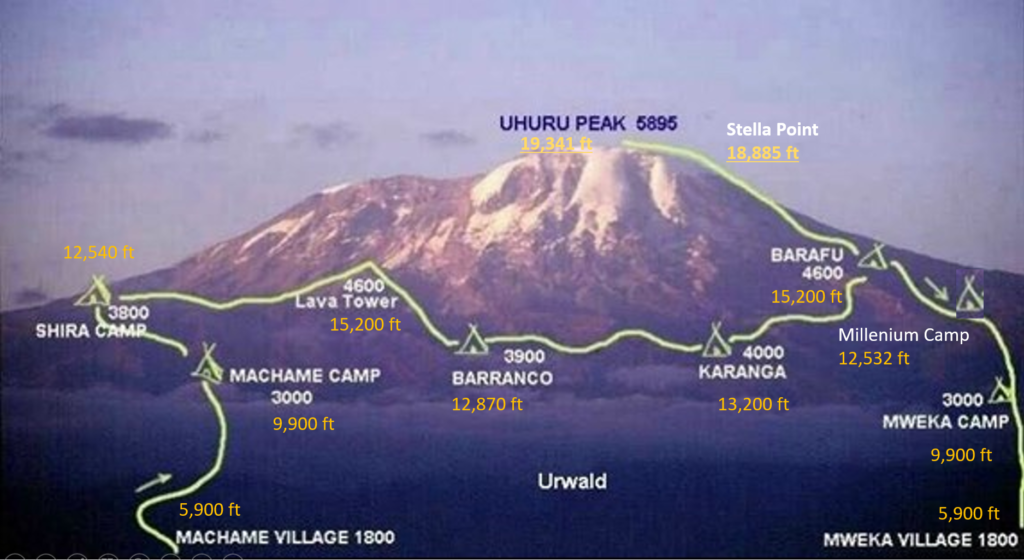
Here was our trek itinerary:
- Day 1: Machame Gate (5,900 ft) to Machame Camp (9,900 ft). Net elevation gain: 3,000 ft. Distance: 11km
- Day 2: Machame Camp (9,900 ft) to Shira Camp (12,540 ft). Net elevation gain: 2,640 ft. Distance: 5km
- Day 3: Shira Camp (12,540 ft) to Lava Tower (15,200 ft) to Baranco Camp (12,870 ft). Net elevation gain: 330 ft. Distance: 10km
- Day 4: Baranco Camp (12,870 ft) to Karanga Camp (13,200 ft). Net elevation gain 330 ft: Distance: 5km
- Day 5: Karanga Camp (13,200 ft) to Barafu Camp (Base Camp, 15,200 ft). Net elevation gain 2,000 ft: Distance: 5km
- Day 6/7: Barafu (Base, 15,200 ft) Camp to Kilimanjaro Summit (19,341 ft) then down to High Camp (12,532 ft). Net elevation gain: 4,141 ft. Distance 14 km
- Day 8: High Camp (12,532 ft) to Mweka Gate (5,380 ft). Net elevation loss: 7,152 ft. Distance covered: 13.5km
Day 0: Wed, July 19: Team Arrival in Moshi
Day 0 of Kilimanjaro was Wed, July 19. All the 29 team members had arrived by July 19 at the Panama Garden Resort in Moshi. 14 of those 29 team members had also visited the Ngorongoro crater one day earlier on July 18.


Wed, July 19 was a chilled out day. We walked around town in Moshi. We had lunch at Kili Garden restaurant. We went there at around 12.30 pm and sat there till 4.45 pm.



During the day, we also met with Aloyce (Luis) Erasmi from African Lovebirds, the agency that we were trekking with. We made the payments for the trek and the rentals (sleeping bag etc.)
Jai Rawat and his team of 8 people also met us around 6 pm, where they had finished the trek a day earlier. Therefore, they had come back to Panama Garden Resort before we left. It was great to meet them and get some tips from them about the climb.
We had dinner around 8.30 pm and we slept by 10.30 pm.
Day 1: Thu, July 20: Moshi to Machame Gate to Machame Camp
Woke up around 6.30 am. Met Jai and and team in the morning. We had organized a briefing by them to our team at 8.15 am. This helped answer many questions.
Got ready at 9 am. Left in one bus at 10.30 am, a little cramped but ok. Stopped at rental place where it took about 1.30 hours. It took a lot of time at the rentals. Ideally, this activity should have been done a day earlier. Mt. Kilimanjaro was already visible from the road.


We reached Machame gate at 12.30 pm. Lunch was served to us by the African Love Birds crew at Machame Gate.

After lunch, we had to complete the registration before the start of the trek.

The actual trek started at 2.10 pm. It was a long trek, about 11 km, 3900 ft ascent through the thick rainforest. Muddy in some places, luckily no rain.
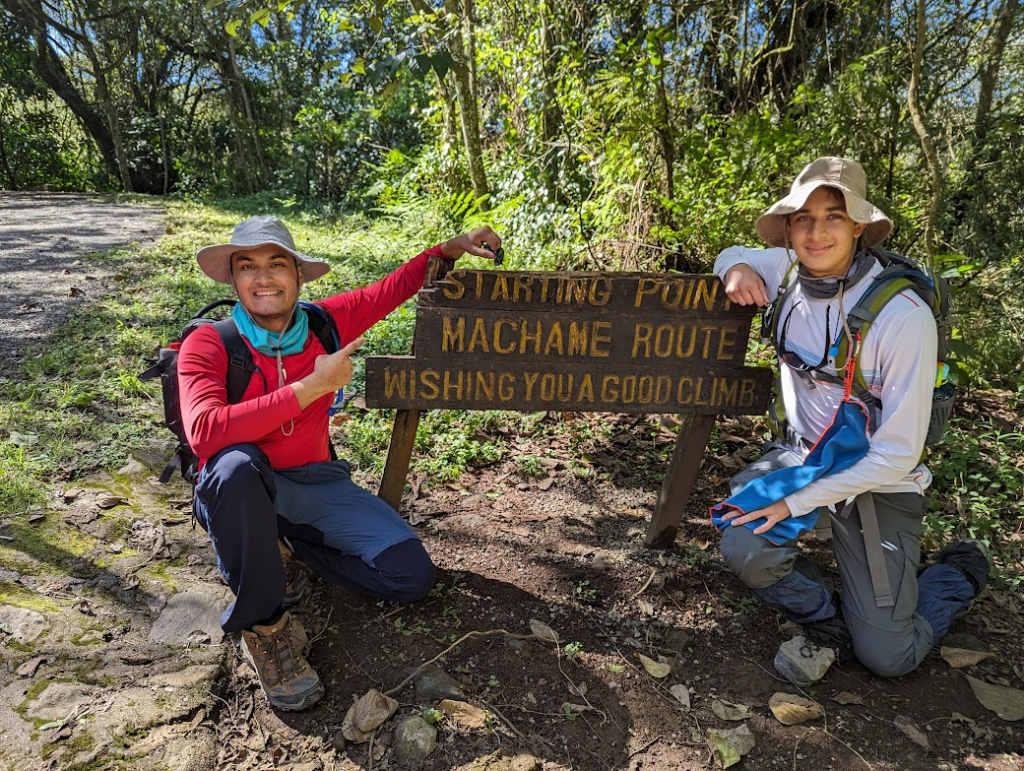

It was a gradual but continuous ascent through a dense rainforest. Anu and I maintained a continuous pace and only stopped only once.
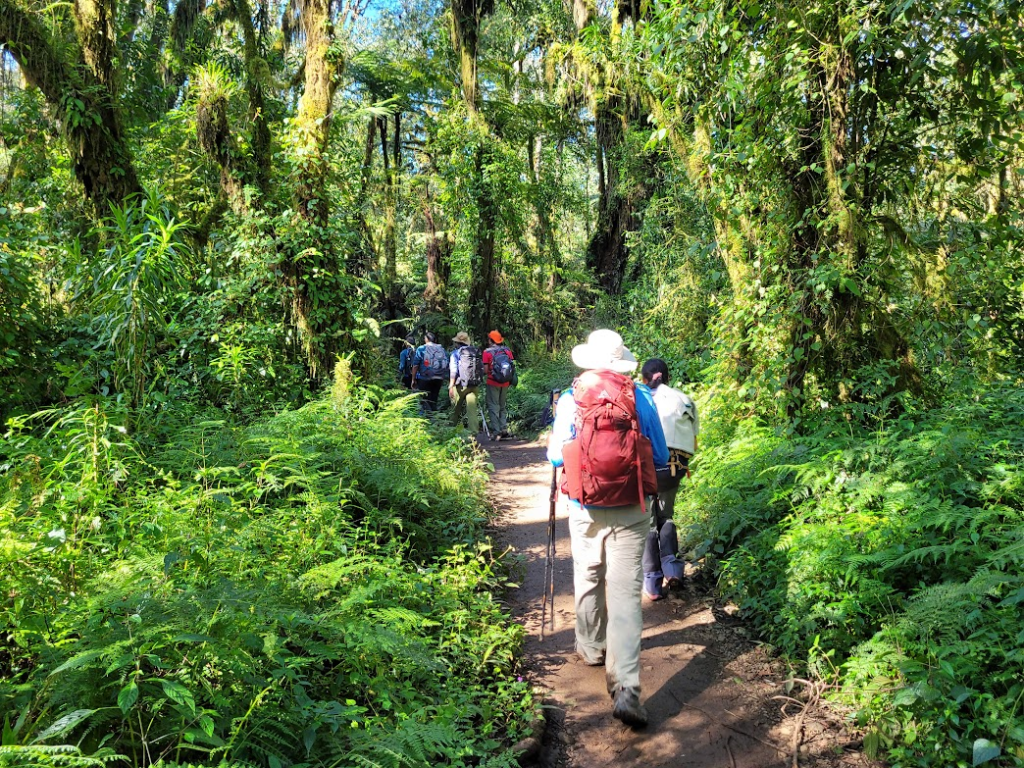
We saw an antcrossing on the way.

Beautiful wildflowers were already visible along the way.

Sahil and Neel reached Machame camp early during daylight.
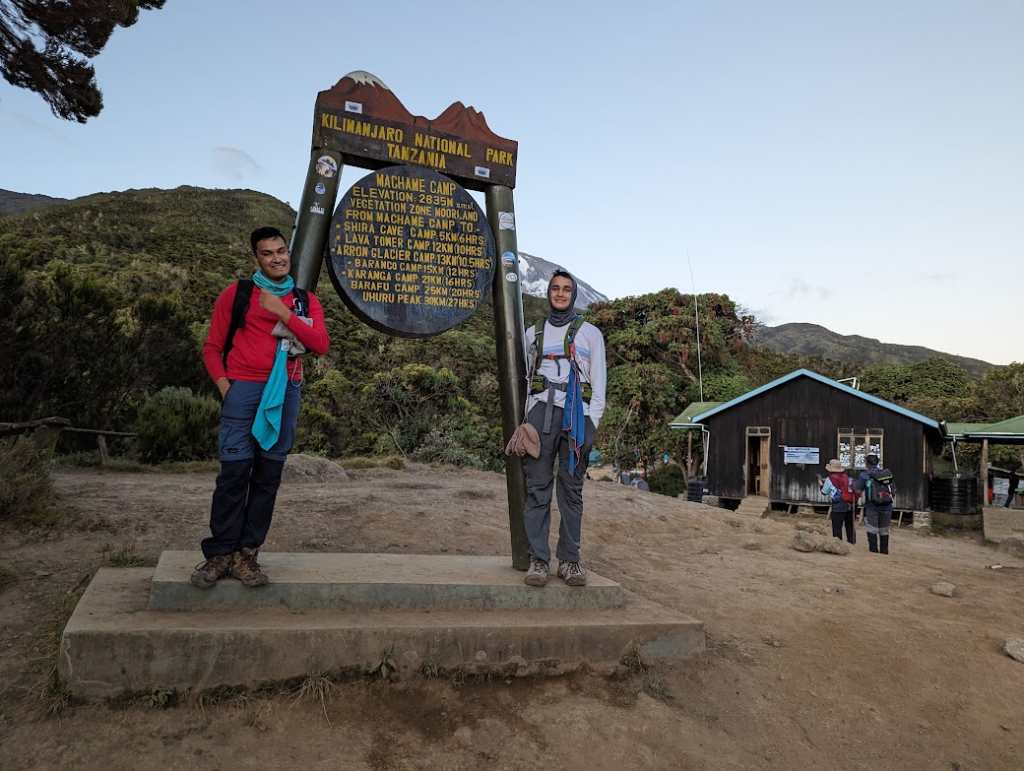
Anu, Meenal and I reached camp at 7.10 pm in the dark. Many others came even later, around 8 pm. Net elevation gain: 3,400 ft. Distance: 11km
We had popcorn and tea as soon as we arrived. Dinner was excellent. Leek soup, very tasty. Bread, spaghetti and stew.
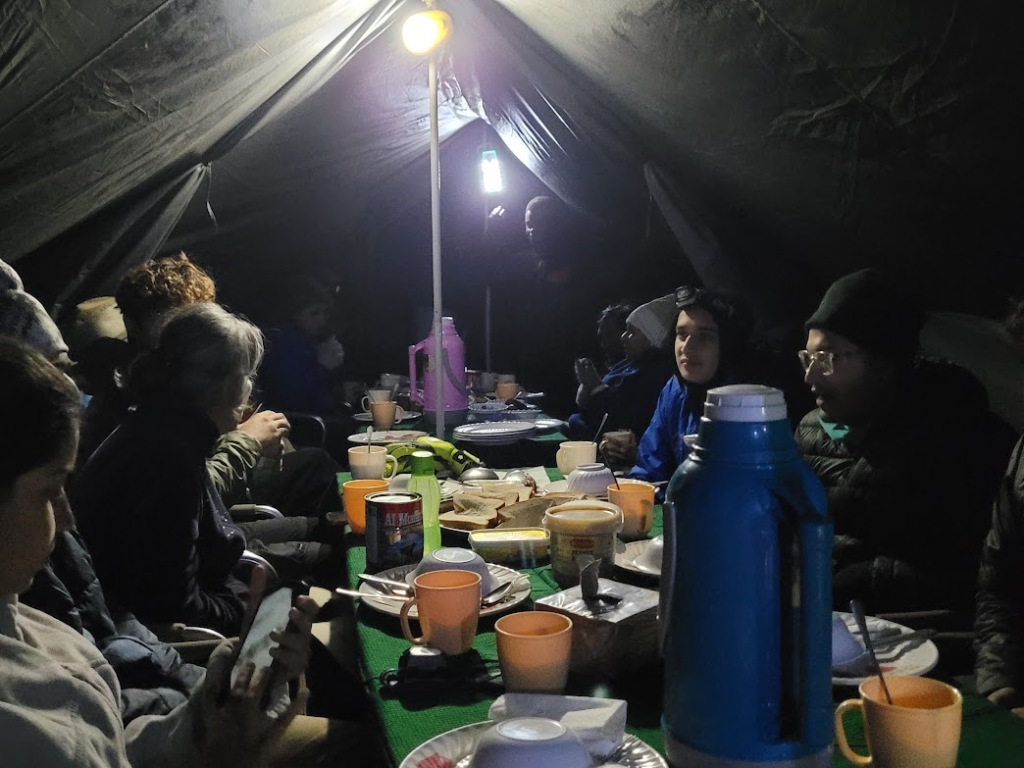
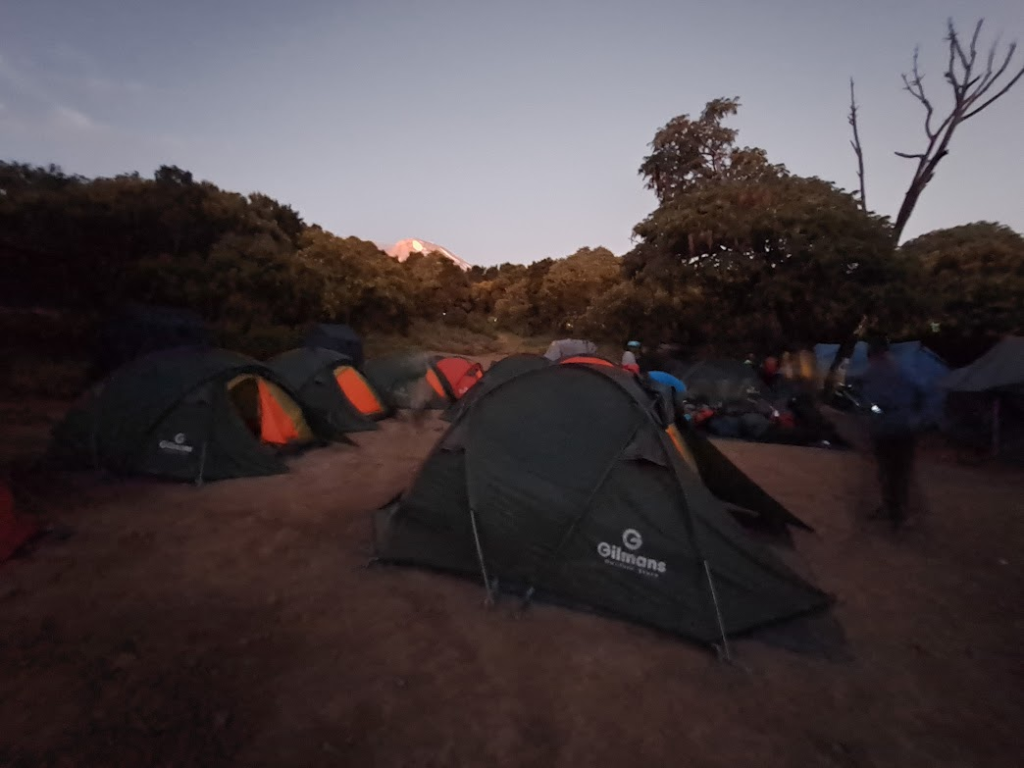
First view of the beautiful night skies.

We went to sleep at 10 pm. Everyone was fine and in good spirits.
Key Observations
- We were 29 trekkers and there was a staff of 95 people including guides, cooks, porters etc. supporting us. That ratio is higher than any other trek that I have done.
- We had 12 guides. So always someone to support the trekkers
- The time in the morning could have been saved with rentals, purchases by doing it on the earlier day
- The support staff was always available to help without any complaints
- Most trekkers took Diamox. 125 mg in the morning and 125 mg in the evening. Later they moved to 250 mg once in the morning to avoid multiple pee wake-ups at night.
- Two people per tent. So enough space. Sahil shared a tent with Jack Debbaruah (Atanu’s son).
Day 2: Fri, July 21: Machame Camp to Shira Cave Camp
We woke up at 5.20 am. We were ready at 6.15 am for breakfast. However, the breakfast was served a little late and people finish late as well, getting used to the routine. It was 7.43 am when we started from Machame camp.
We would start the day with “Go 29ers” slogan being said 3 times. We would also do a warm up routine called “Itna bada pahad”, something I had learned on the Chadar trek. It helped people warm up and start the trek on a positive note.
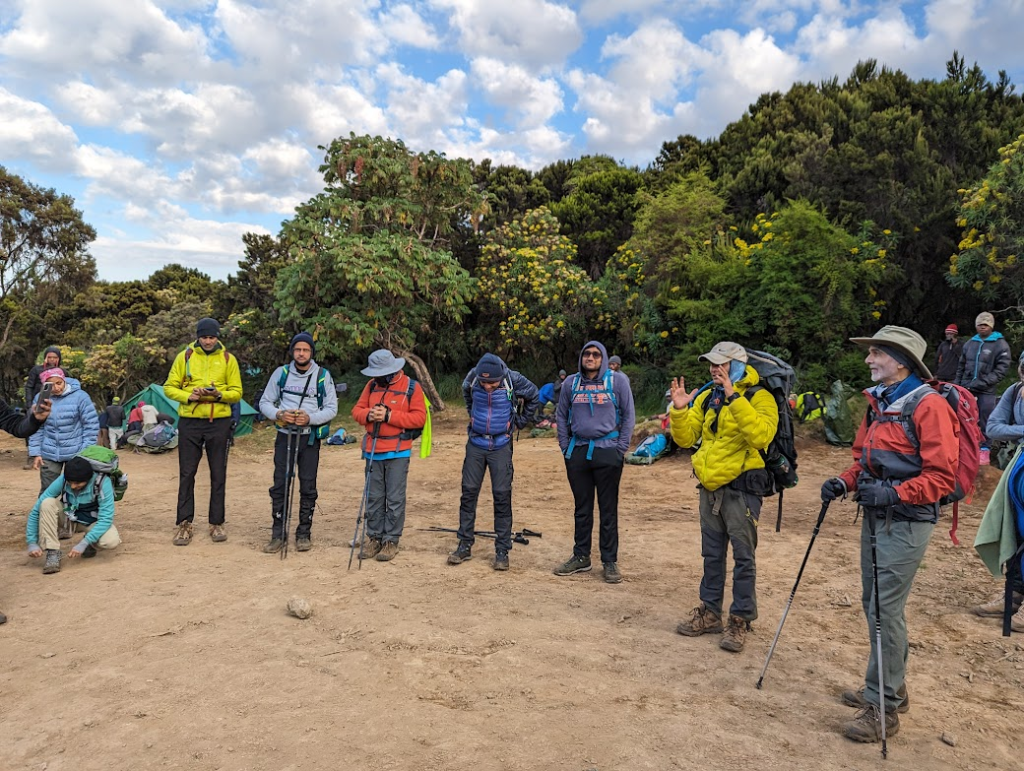
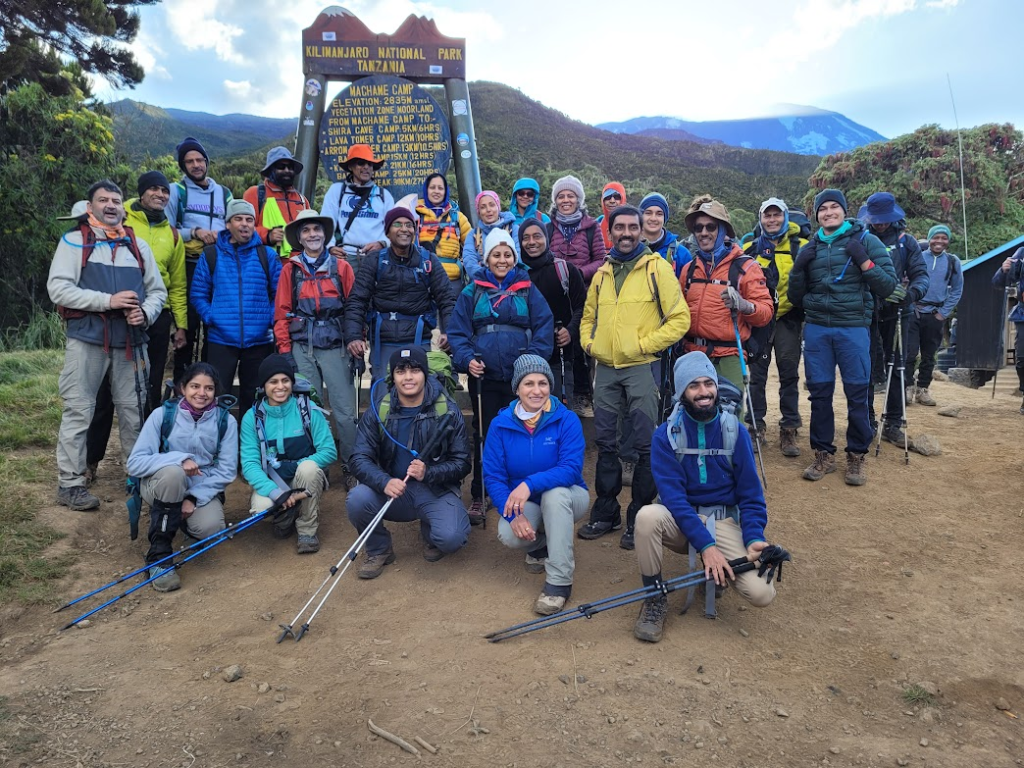
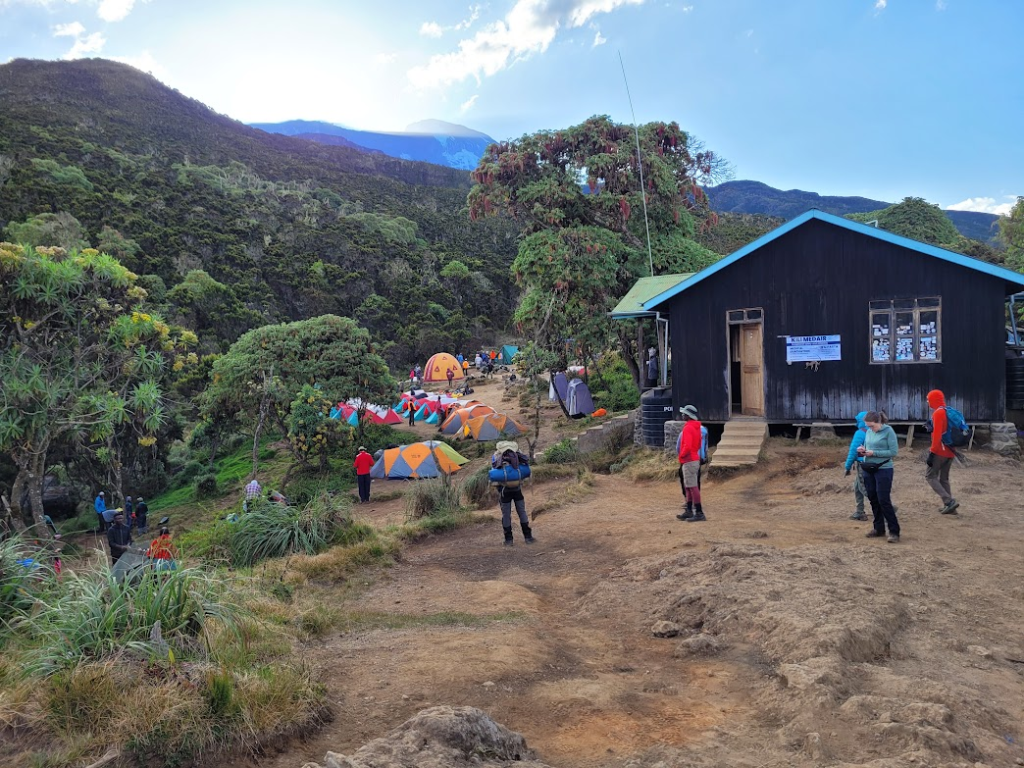
It was a fairly steep climb.

This climatic zone is known as the moorland. Lots of beautiful wildflowers as far as the eye can see. I took lots of pictures of wildflowers.
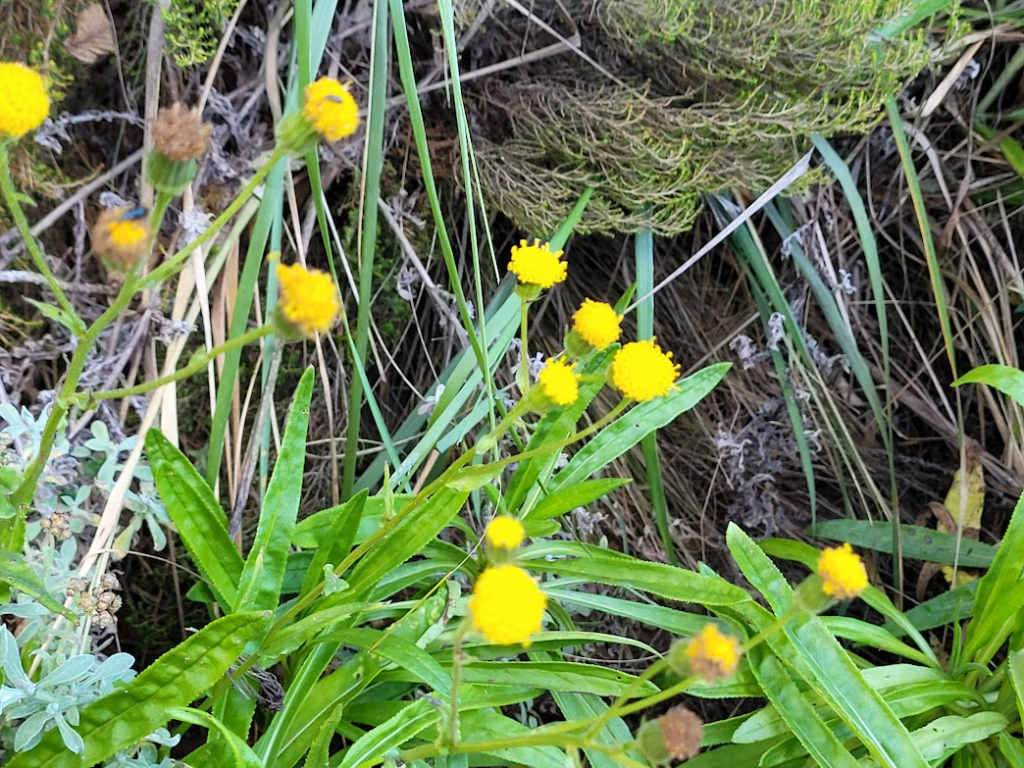
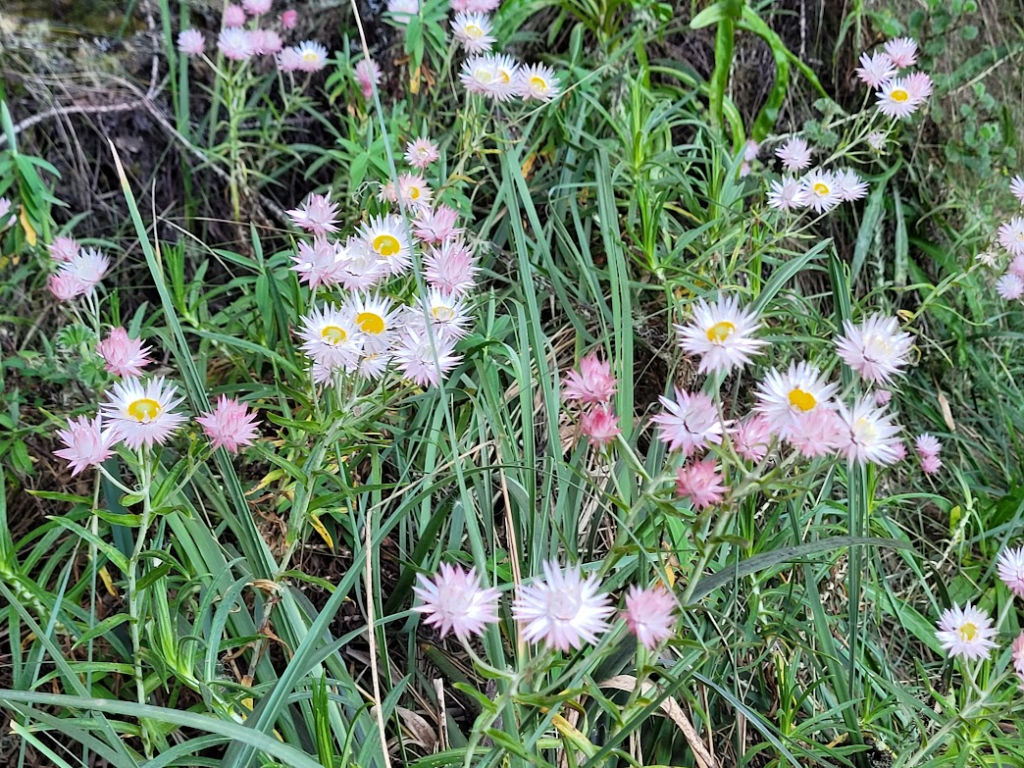
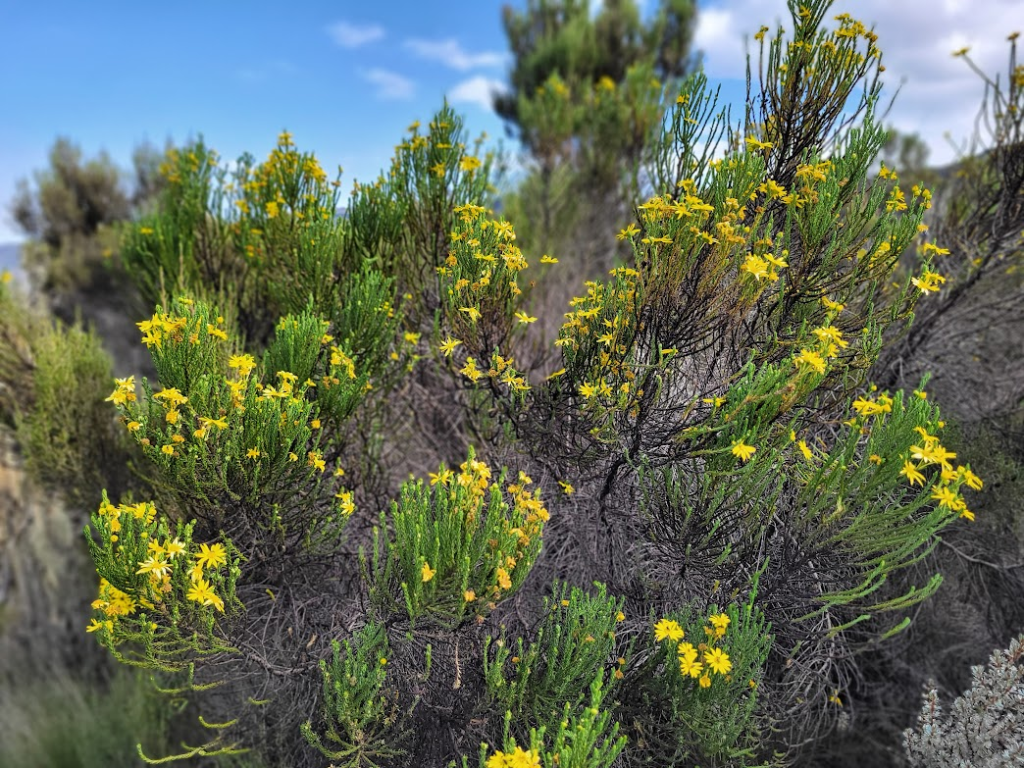
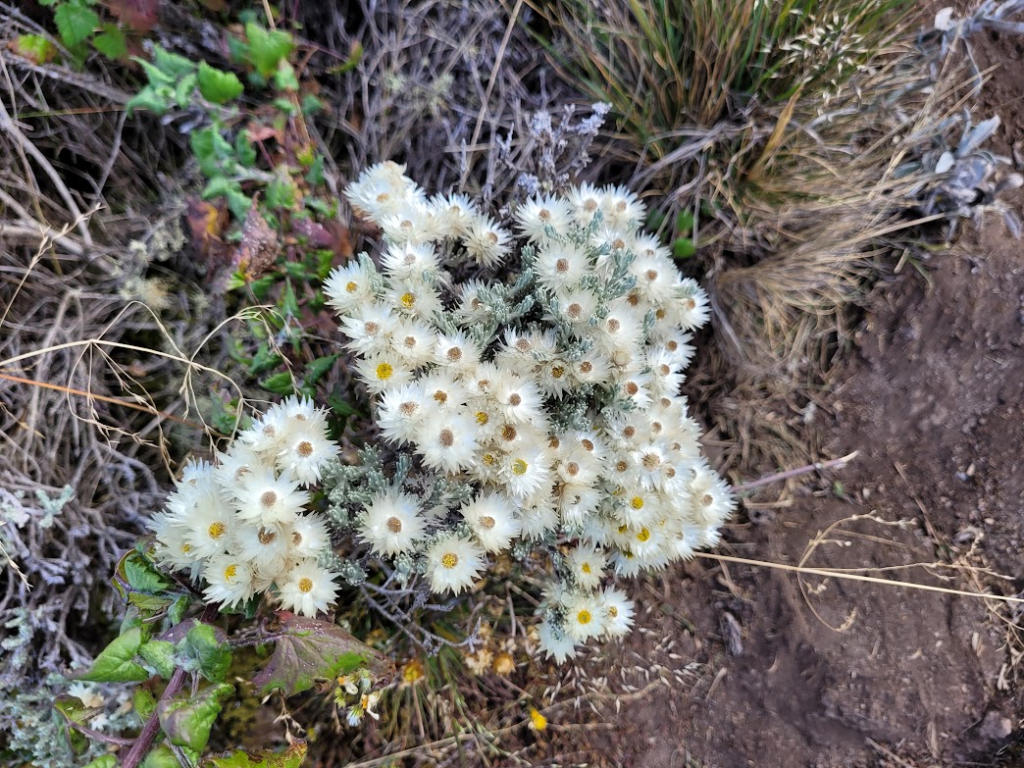
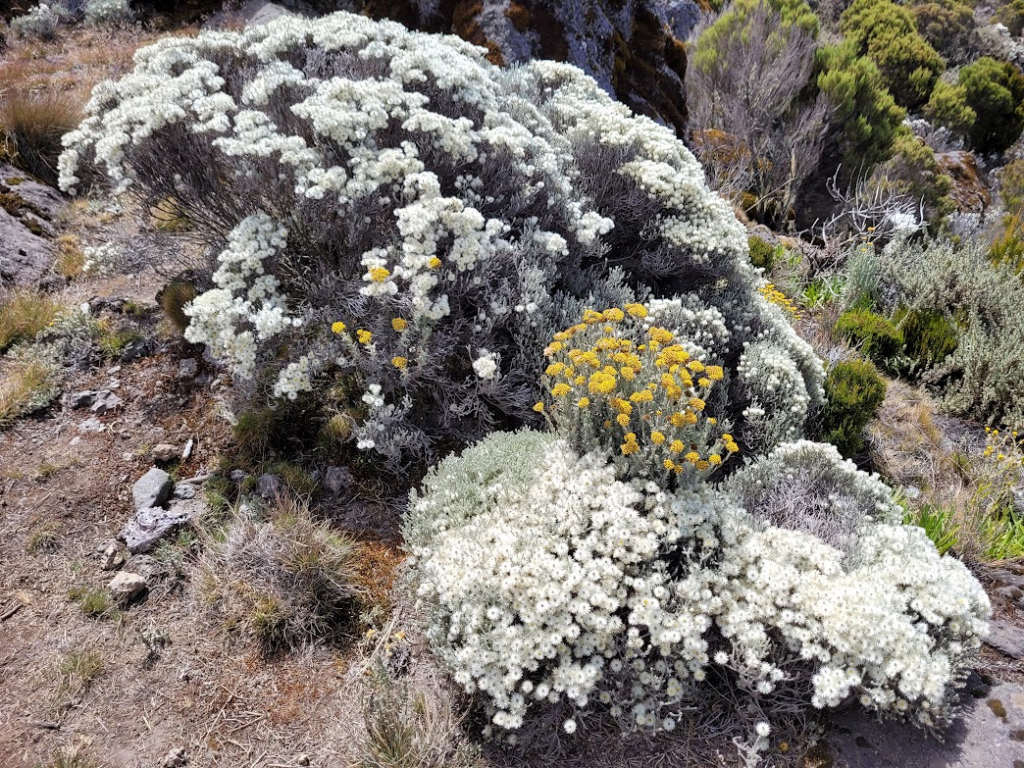
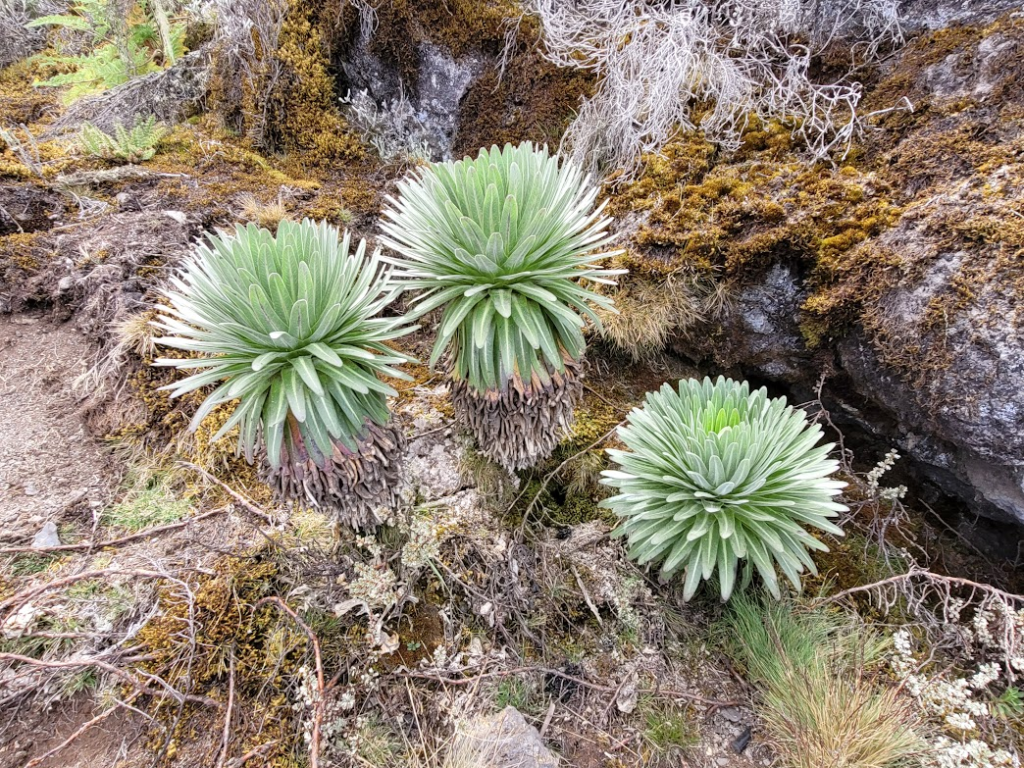


We got blue skies all the time. No rain.

I climbed with the porters most of the time.
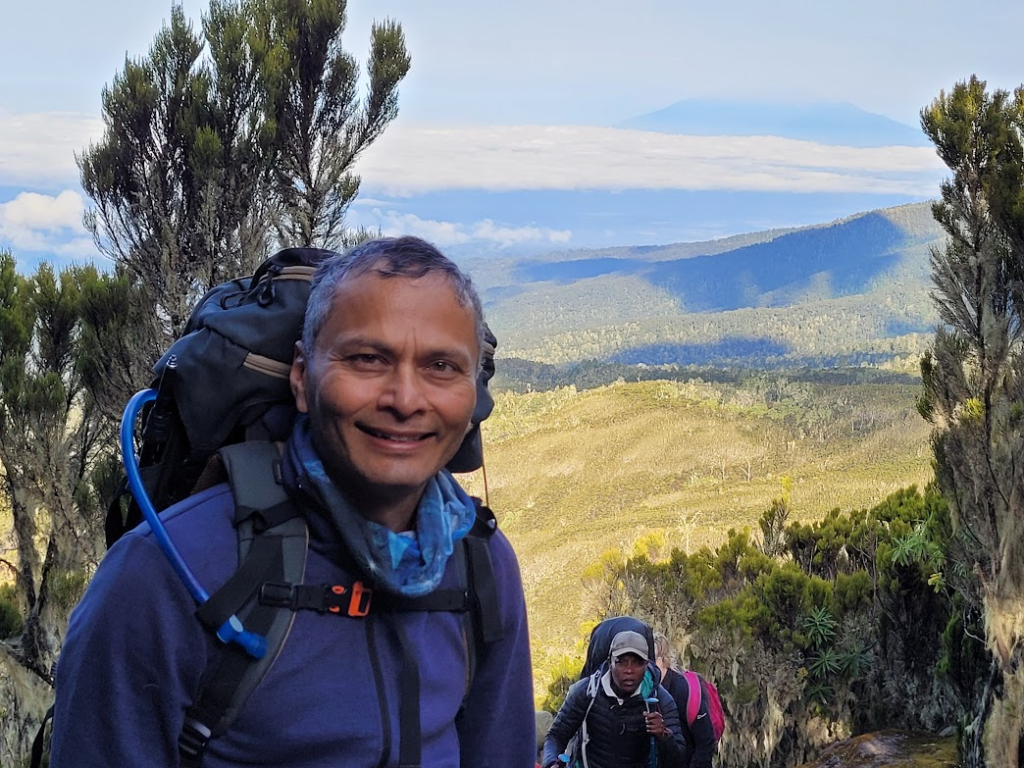
We were beginning to see clouds below.
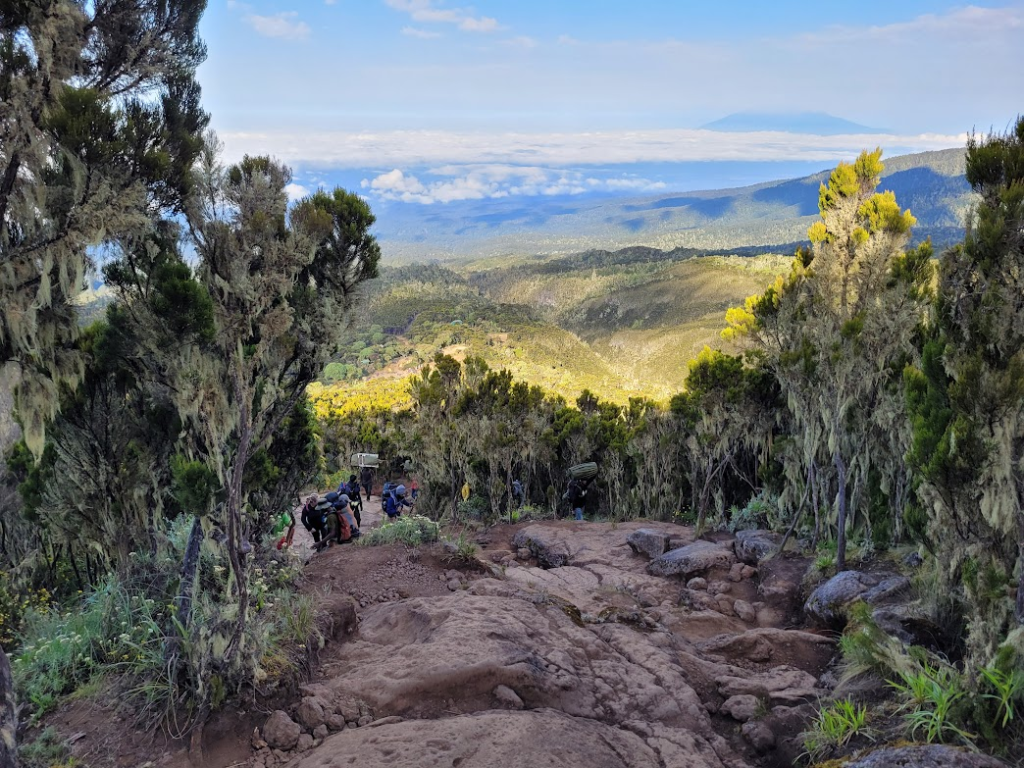
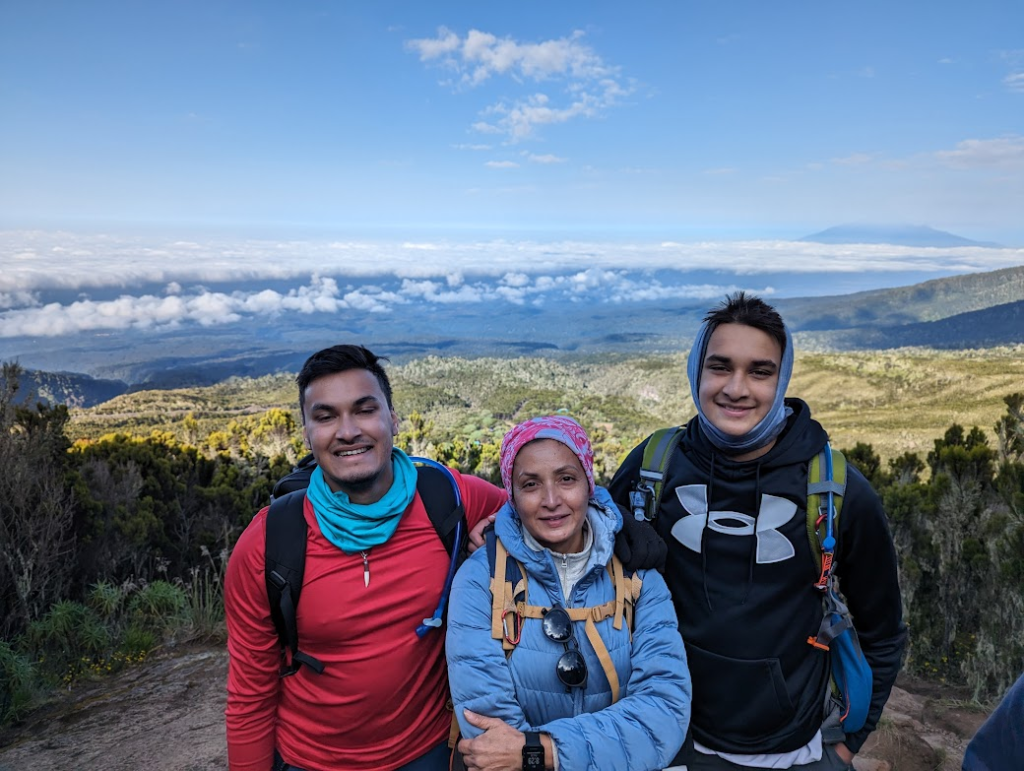
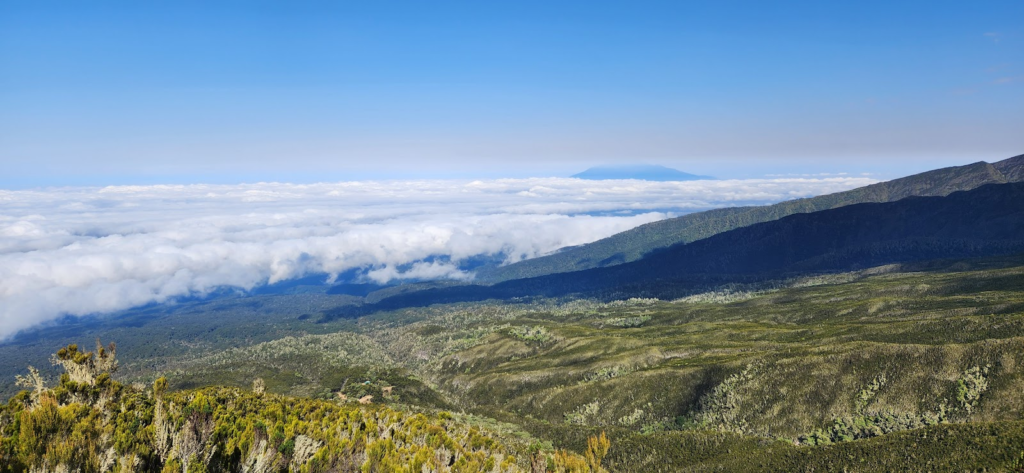
There was also a unique tree called Senecio kilimanjari. It has a big fat trunk and acts as a water source.
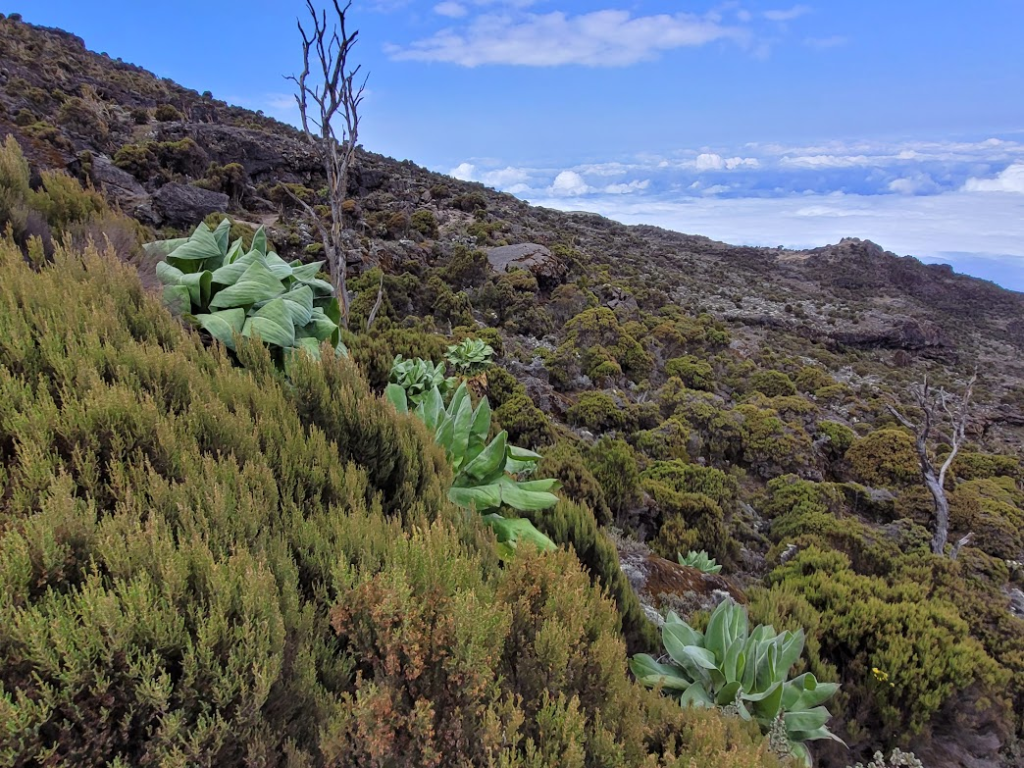
Reached Shira cave camp at 11.50 am. Net elevation gain: 3,000 ft. Distance: 5km Ramesh, Akshay and Madhu had arrived at 11.15 am before the porters.

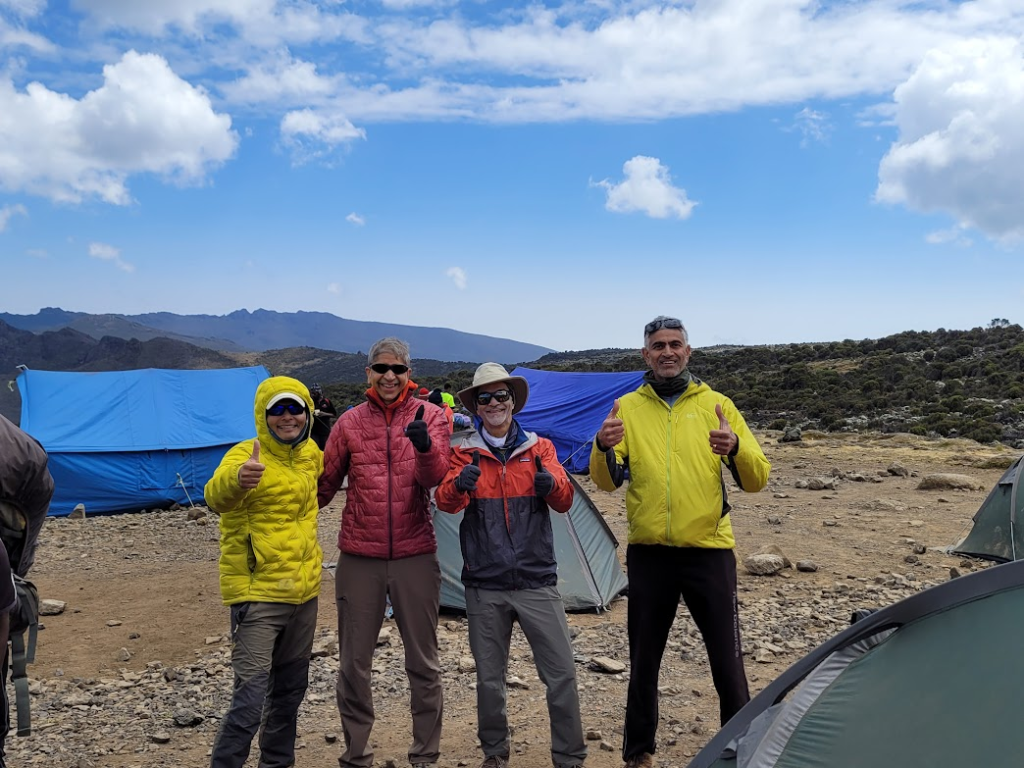
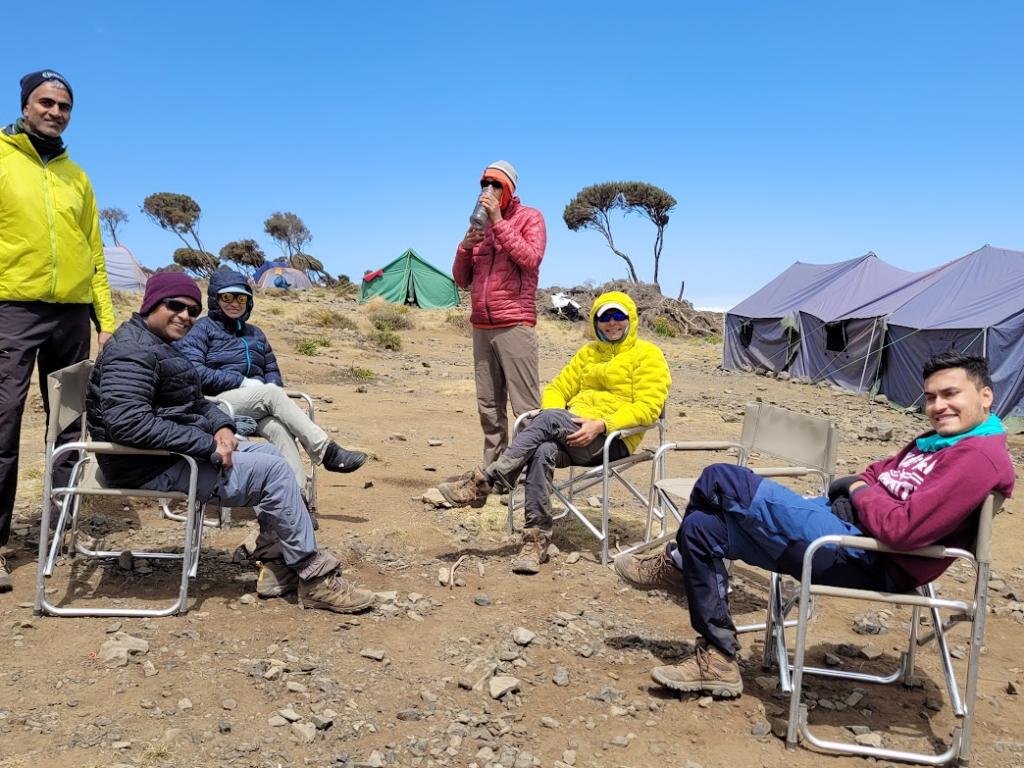
Before the concept of tents was available, trekkers used to stay inside the caves at Shira Camp.
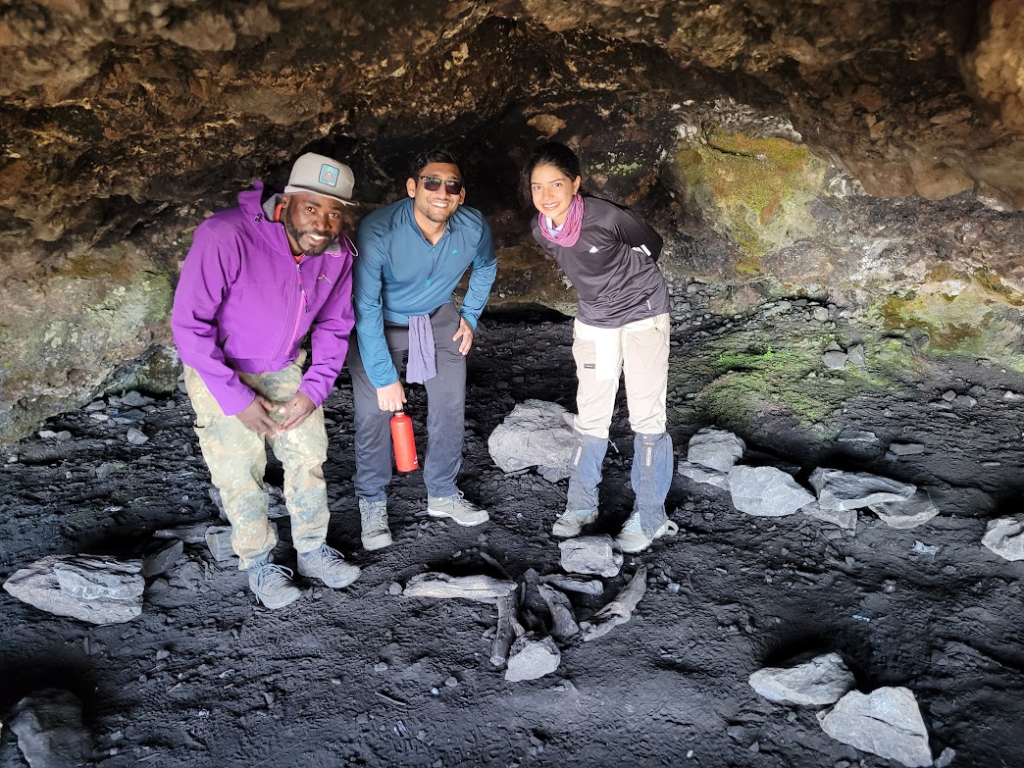
Anu came at around 12.45 pm. I had somehow lost track of the fact that Anu faces acclimatization challenges on the first 2-3 days of the trek. I had taken off and reached early. But luckily, she was ok when she reached Shira camp. Rest of the team was at the destination camp by 2 pm.

We ate lunch at 1.30 pm. Vegetable stew and bread. Not enough stew.

Our meal tent was set up as 3 sections put together in a long line. It was hard for the staff to serve the trekkers because of the long format.
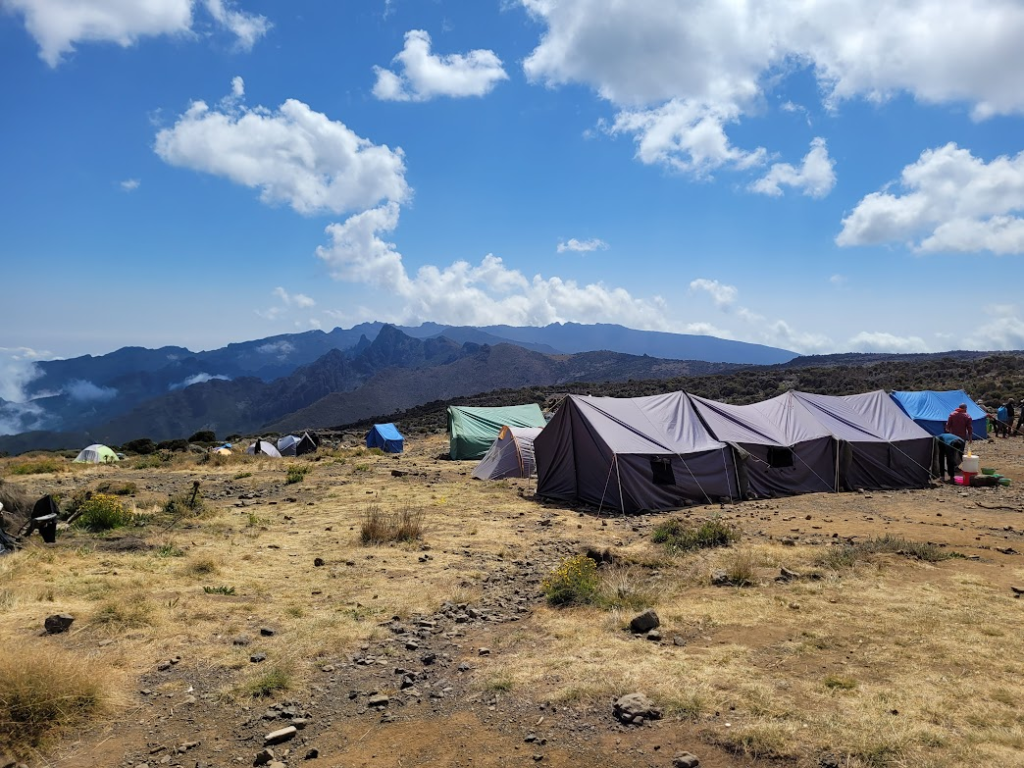
Caught a nap from 3 pm till 3.50 pm.
Acclimatization trek at 4 pm. Went to a tall point nearby. Then Sahil suggested that we go higher to Shira 2 camp which was visible from the tall point. We did the extra trek as well. Back in camp at 6.20 pm. It was a little tiring to do that extra trek.
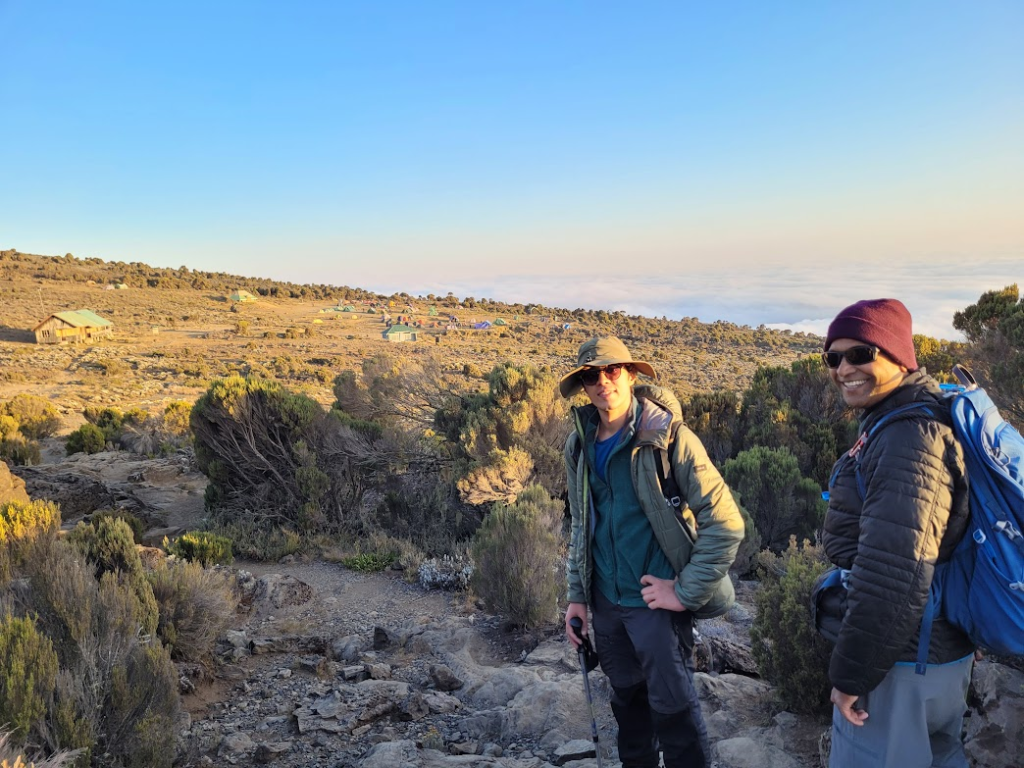
Got beautiful views of the lower elevations from Shira camp. Clouds were already below us.
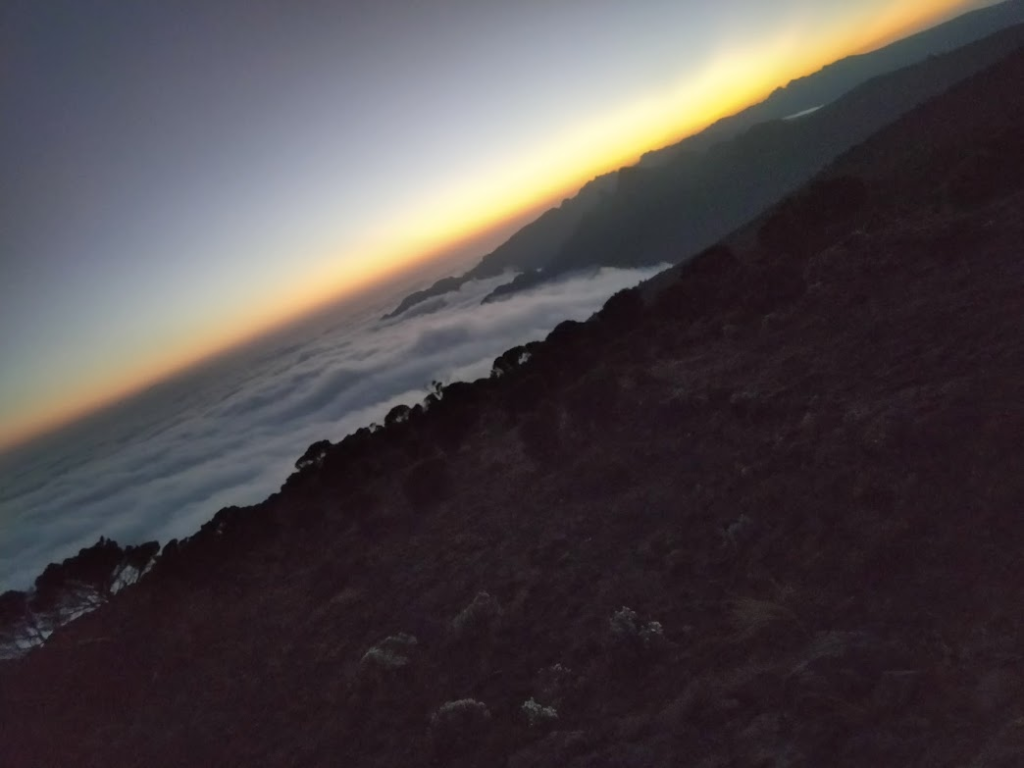
Ate dinner at 7 pm. Celery soup, fish and vegetable stew.
Went to sleep at 8.45 pm.
Key Observations
- Food was not in adequate quantity. It could be because the agency was not equipped to handle a group of 29 people.
- Food taste was alright, but not great. Indian food (e.g. Chapati or rice) was rarely served.
- The staff was well meaning and trying their best.
- Portable toilets were clean and well maintained. This was one of the highlights of the trek.


Day 3: Sat, July 22: Shira Camp to Lava Tower to Baranco Camp
Our routine started with a usual 5.30 wake up.
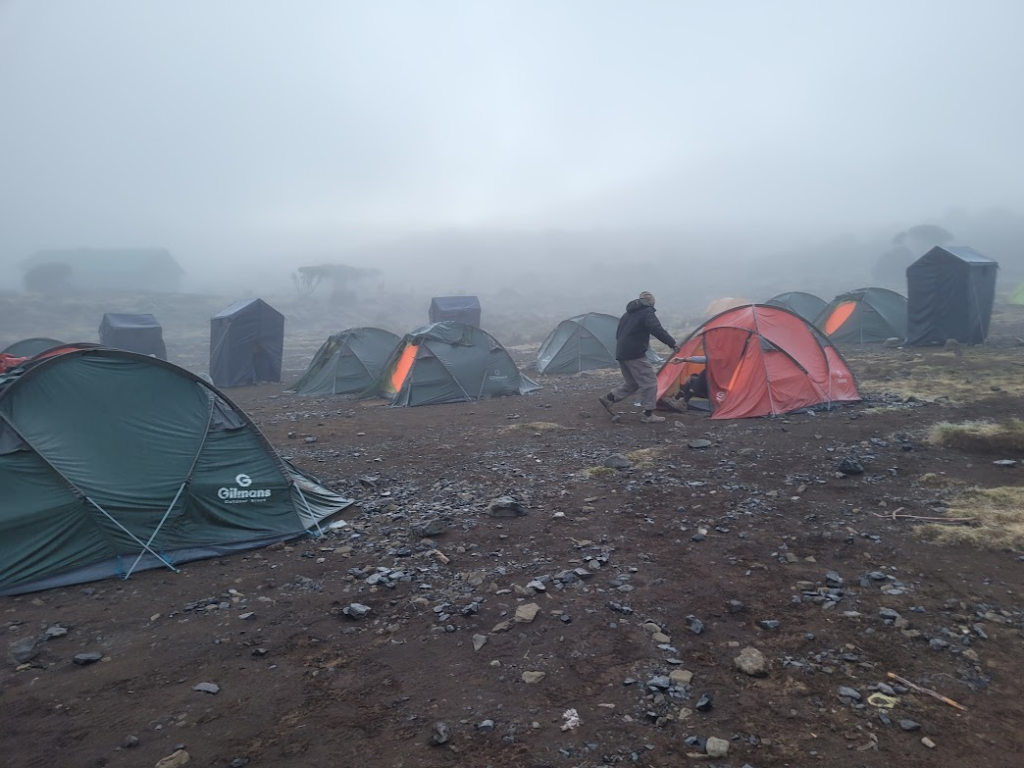
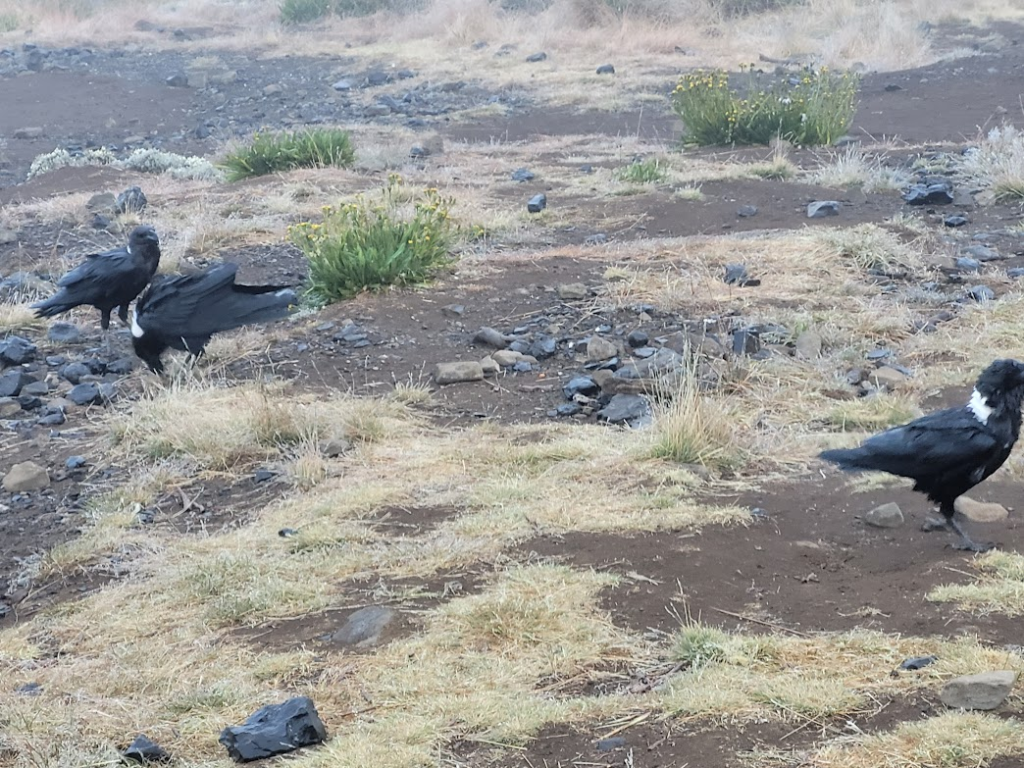
But getting ready and breakfast took time.

We started at 8 am from Shira cave camp.
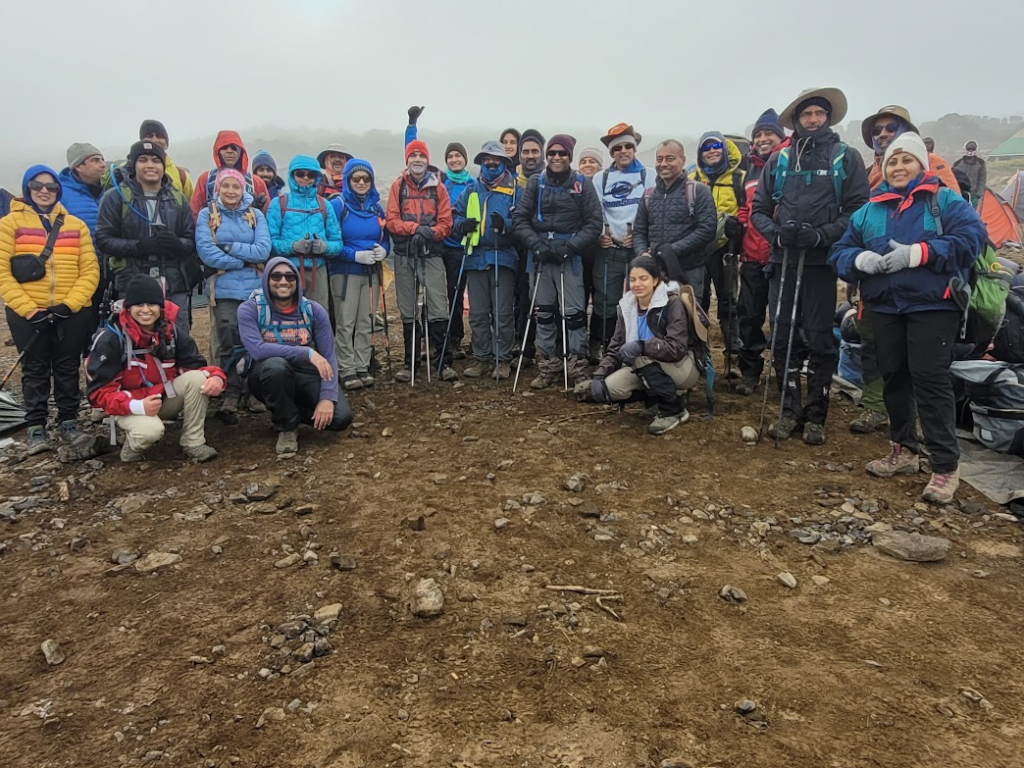
It was a long hard gradual climb to Lava tower at 15,200 ft.
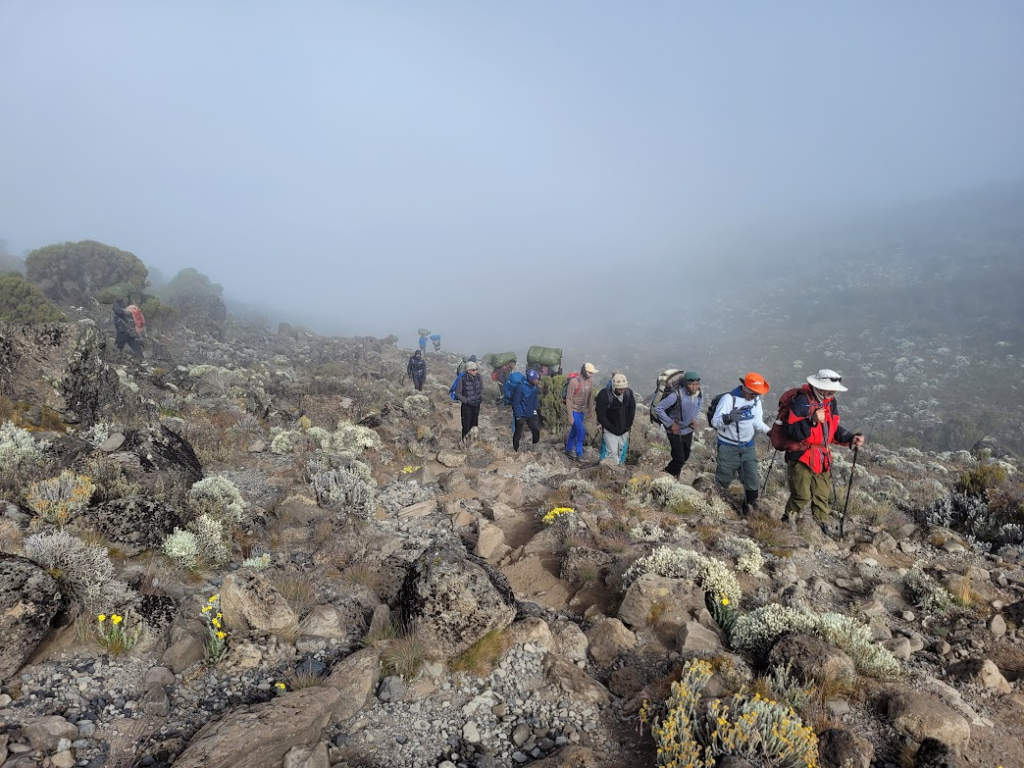
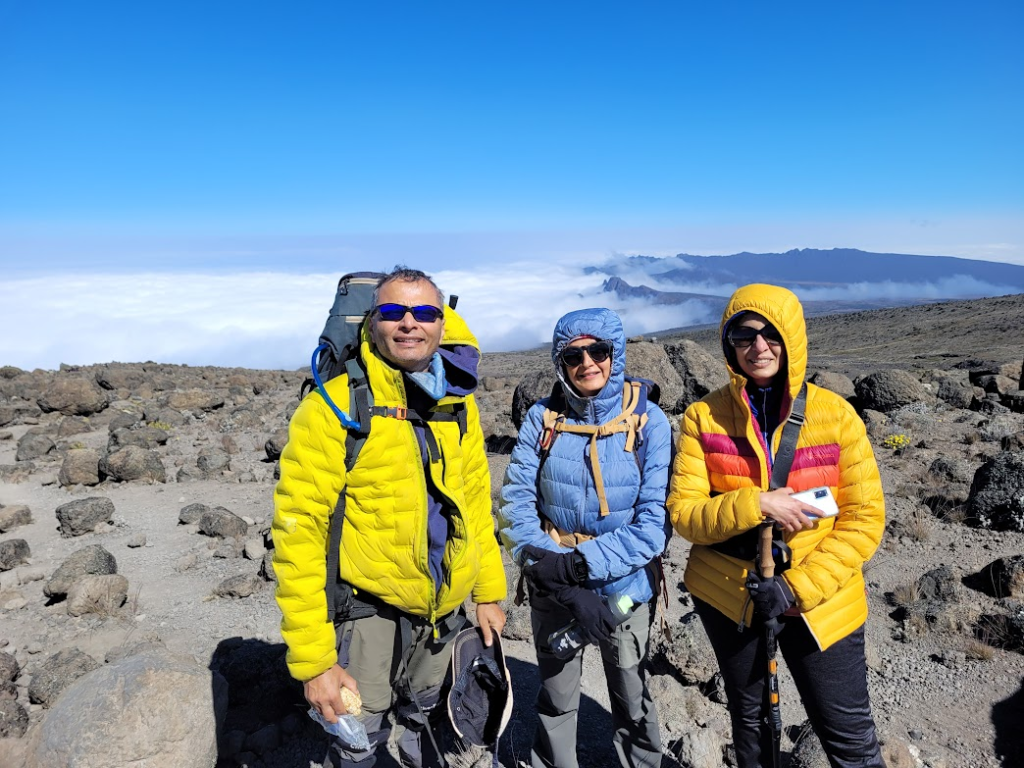
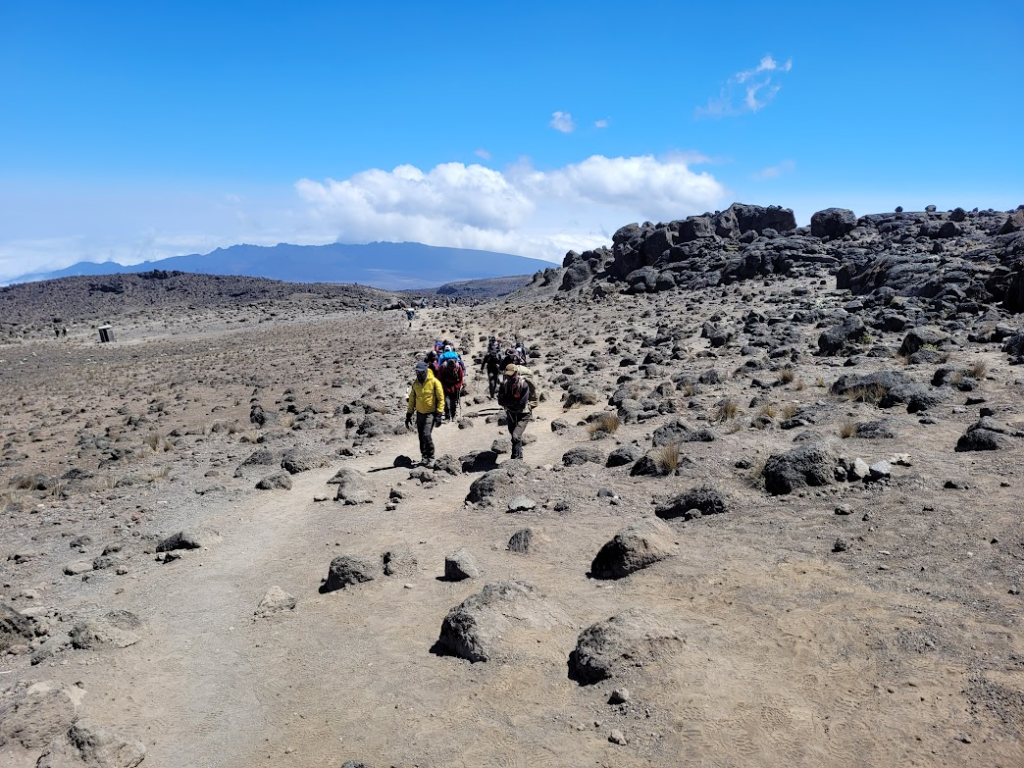
Nice wildflowers along the way, but the vegetation was diminishing.
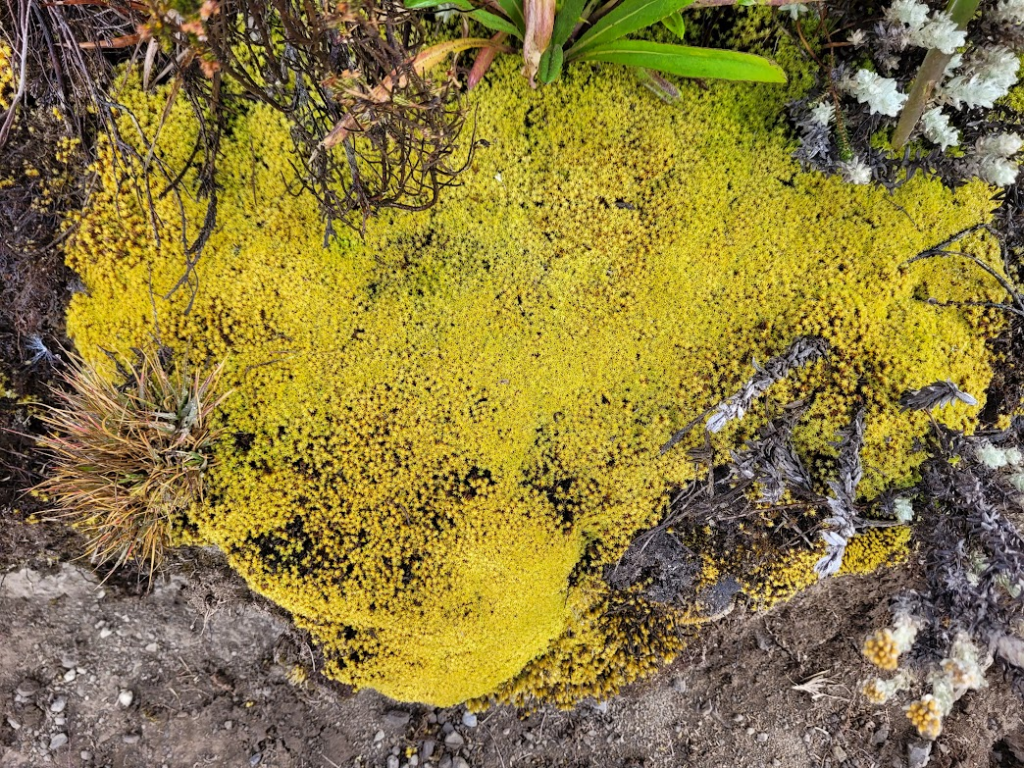
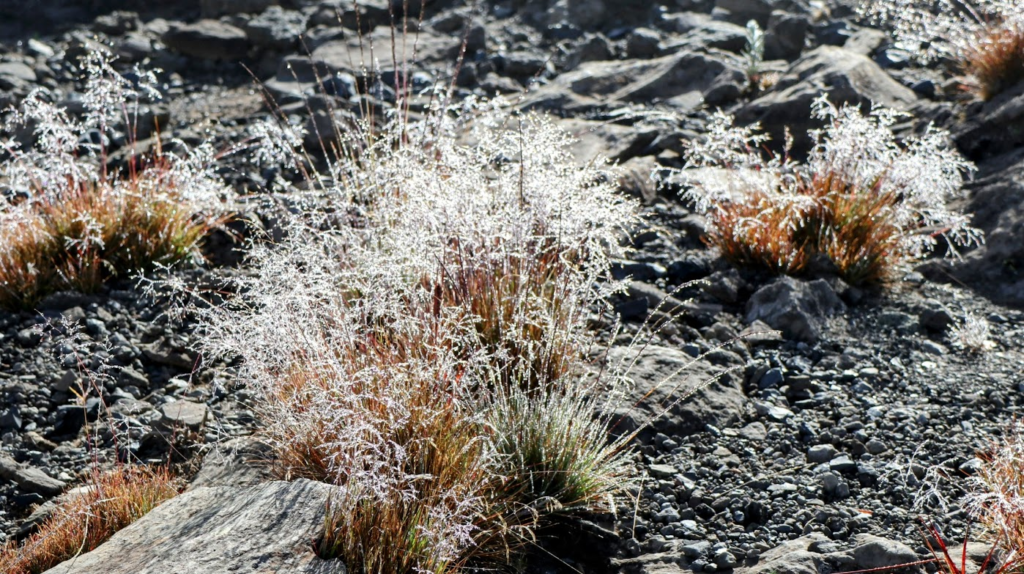
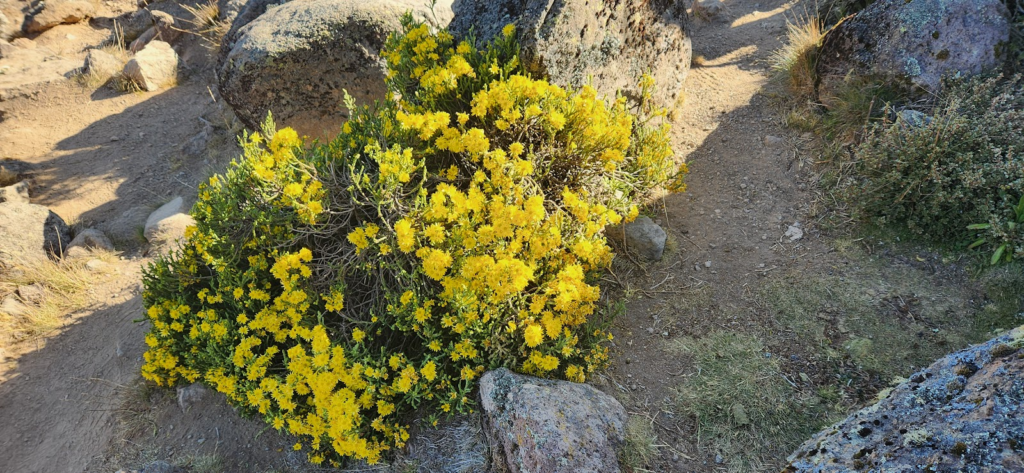
We could see the contour of Mt. Kilimanjaro. It looks like a pregnant lady sleeping on her back. She has flowing hair with streaks of white.
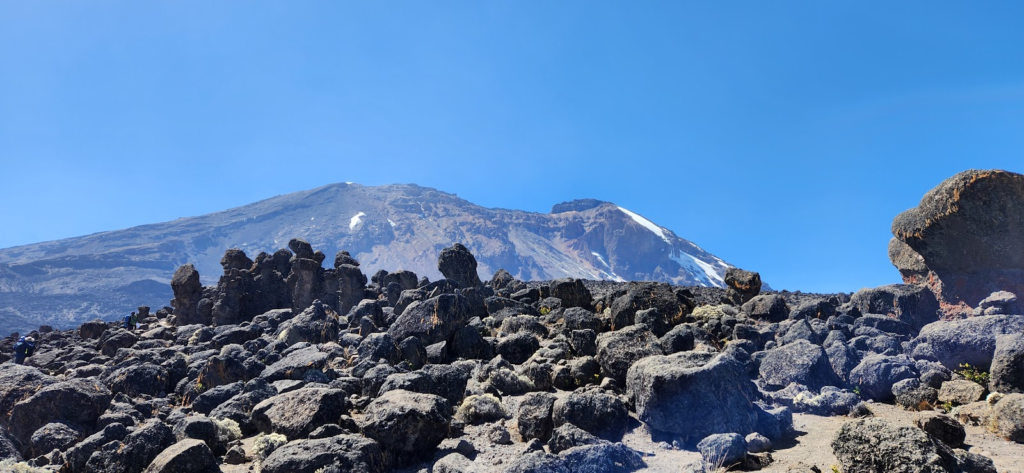
Lava tower is a big column of rock from cooled Lava. It was quite a climb.
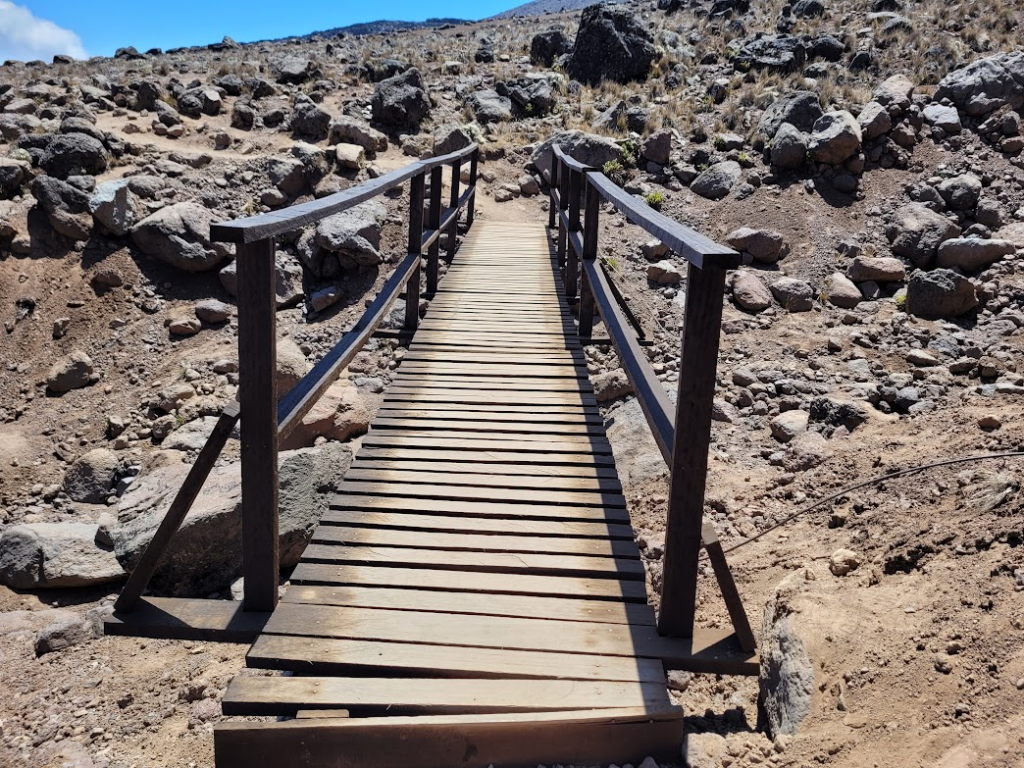
Lava Tower is the tower of rock on the right of the picture below.
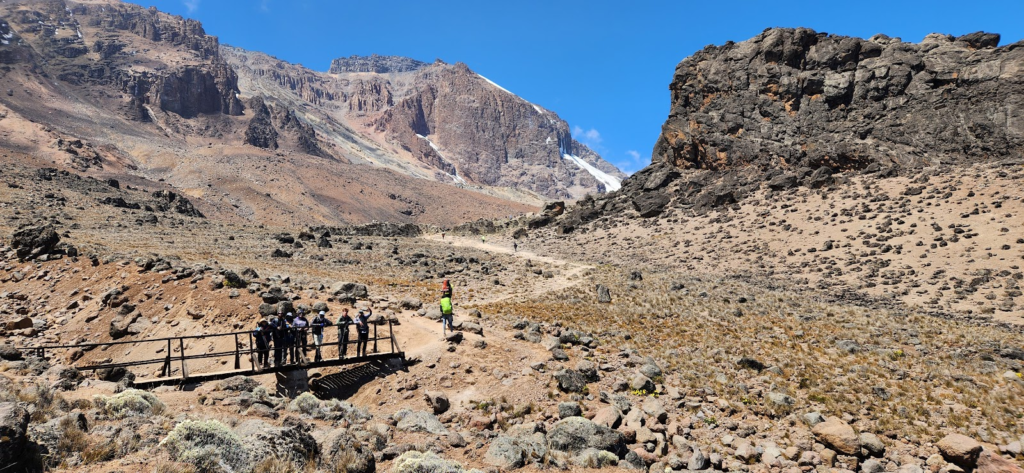
Reached the Lava Tower at 1 pm. Had lunch.
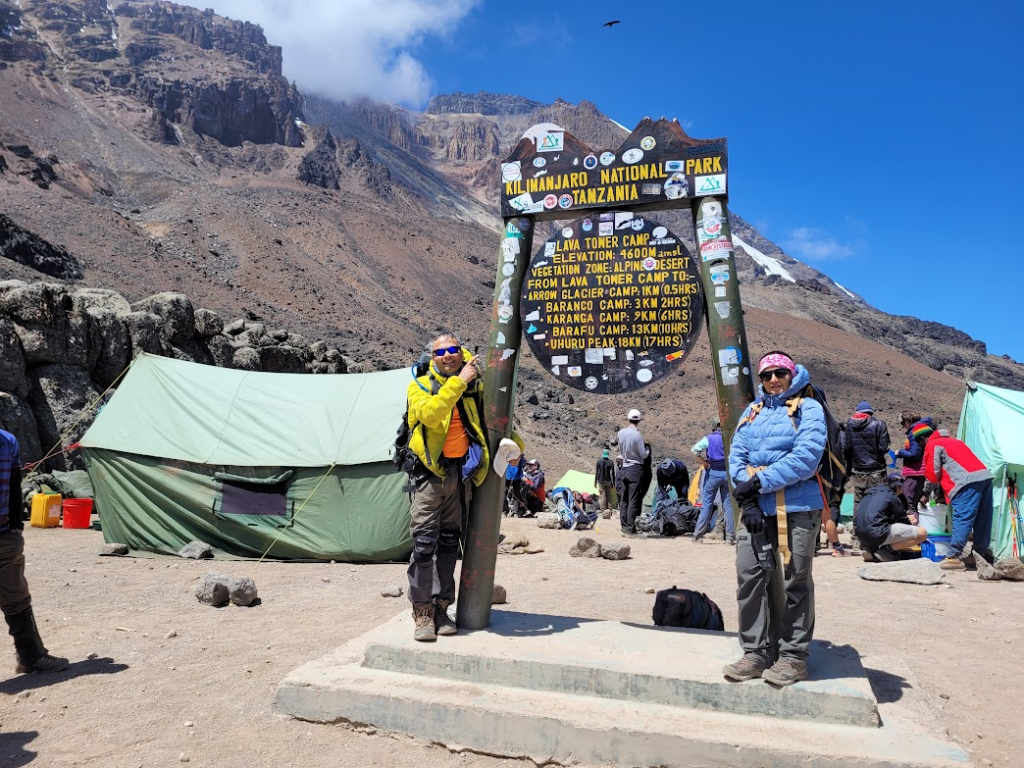
Vidit Goel was not feeling well. He was probably not eating enough and was not drinking enough water. After giving him some electrolyte, he felt ok.

We started from Lava tower at 2.30 pm.
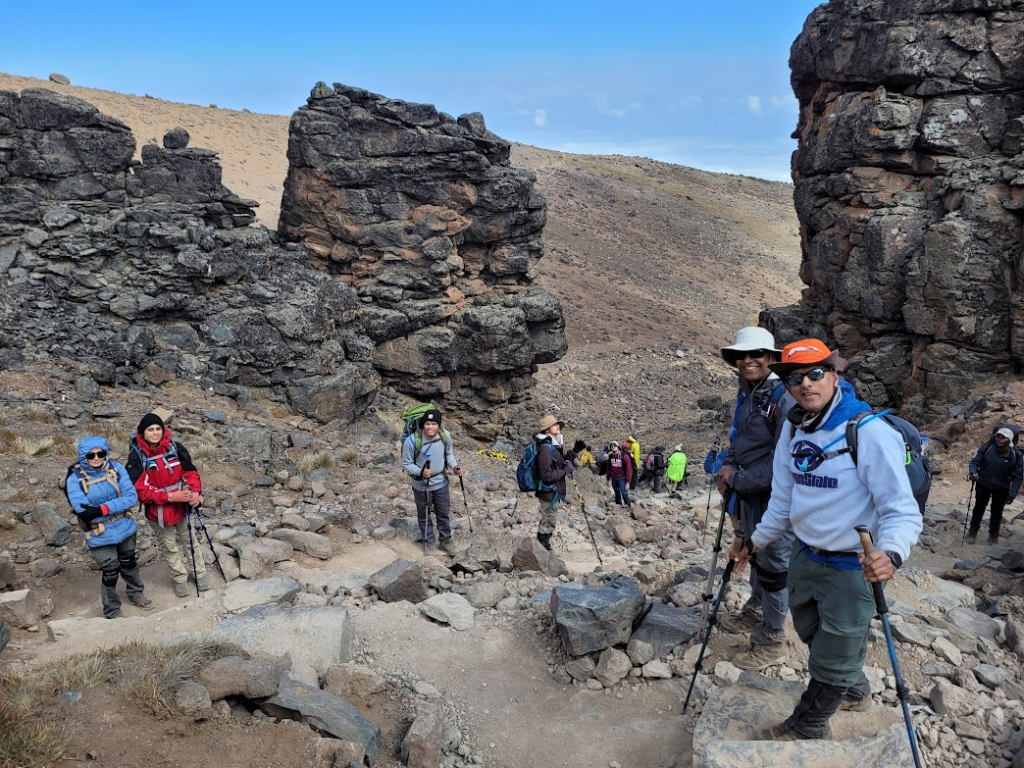
We could see a steep trail called the Western Breach going up to the peak. Kilimanjaro’s Western Breach is a path that leads up the western slopes of the mountain’s snowy summit, Kibo. This path is steep and a little dangerous. We were going to take the more circuitous route via Barafu huts.
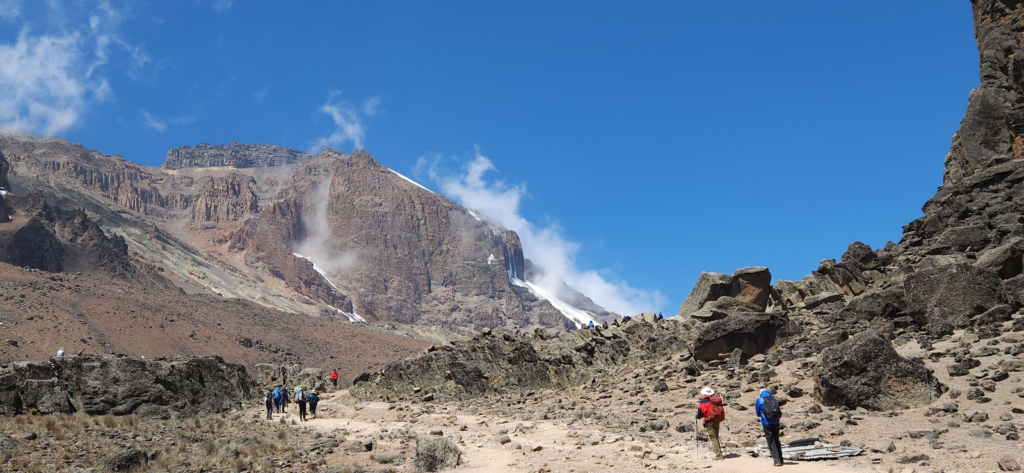
Saw a bunch of Senecio trees.


Steep descent but with great views of the peak.

Beautiful spots on the way.
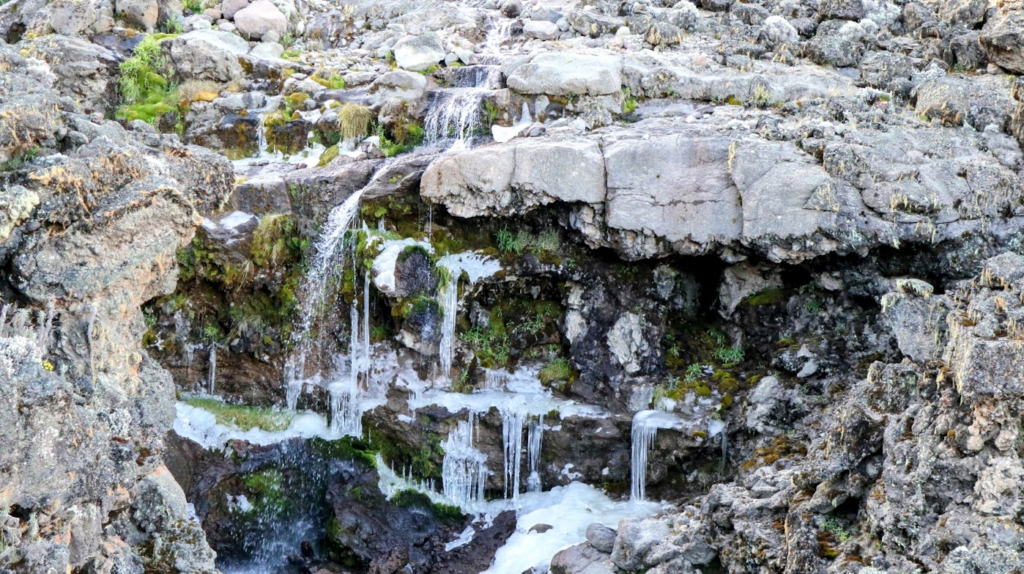
Reached Baranco camp at 5.30 pm.
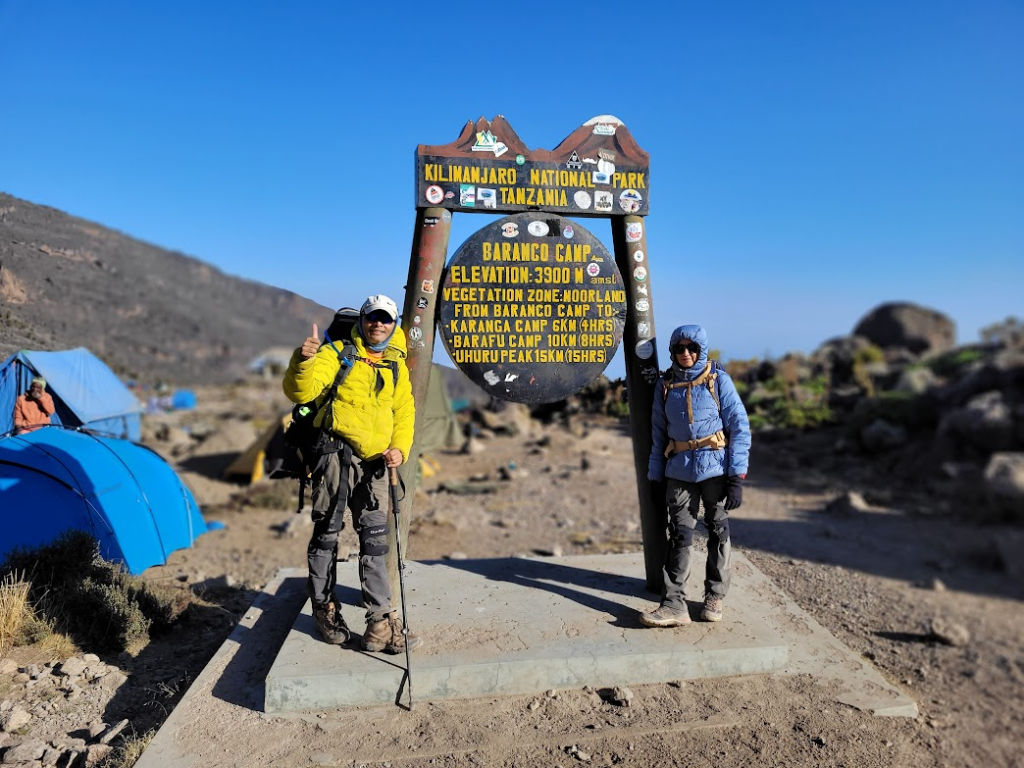
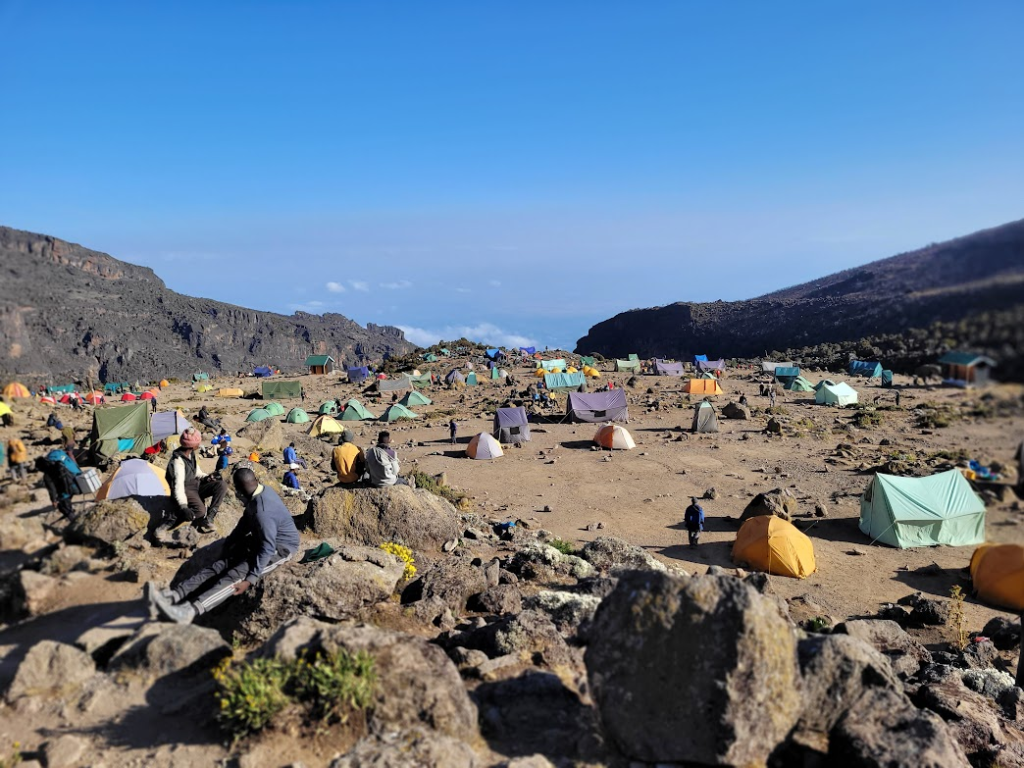
Some people came late at about 7 pm. It was a long day but provided for great acclimatization, where we climbed up to Lava Tower, stayed there for 1.5 hours and then descended steeply down to Baranco camp.
We could see Uhuru peak behind us. It was exciting.
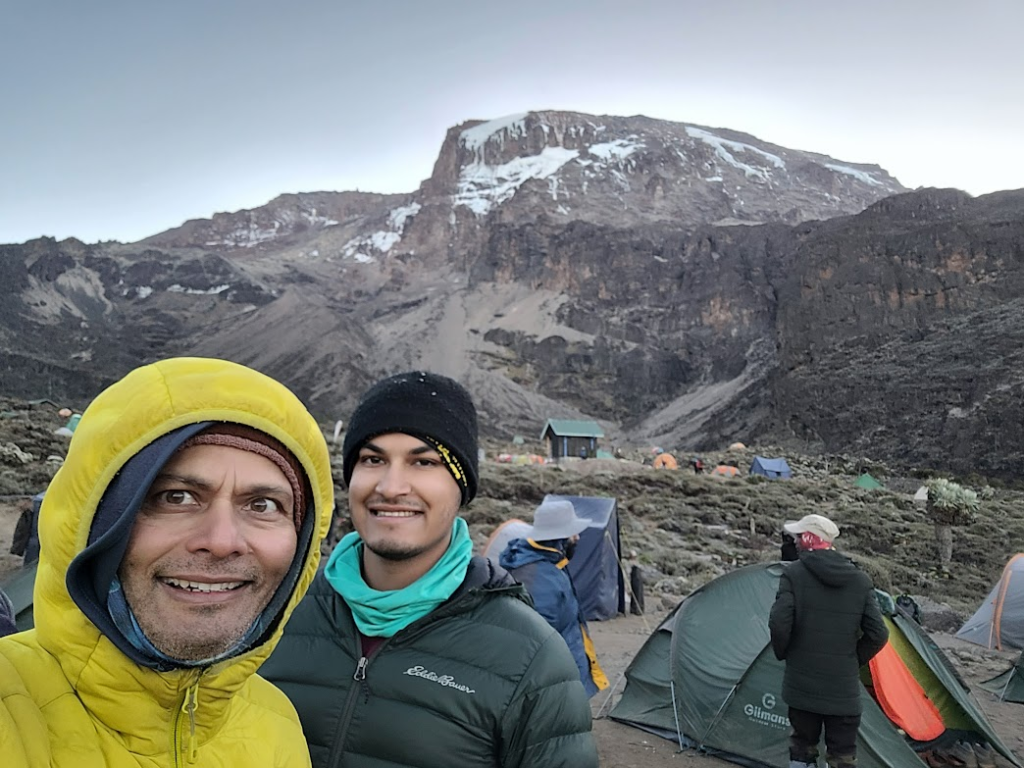
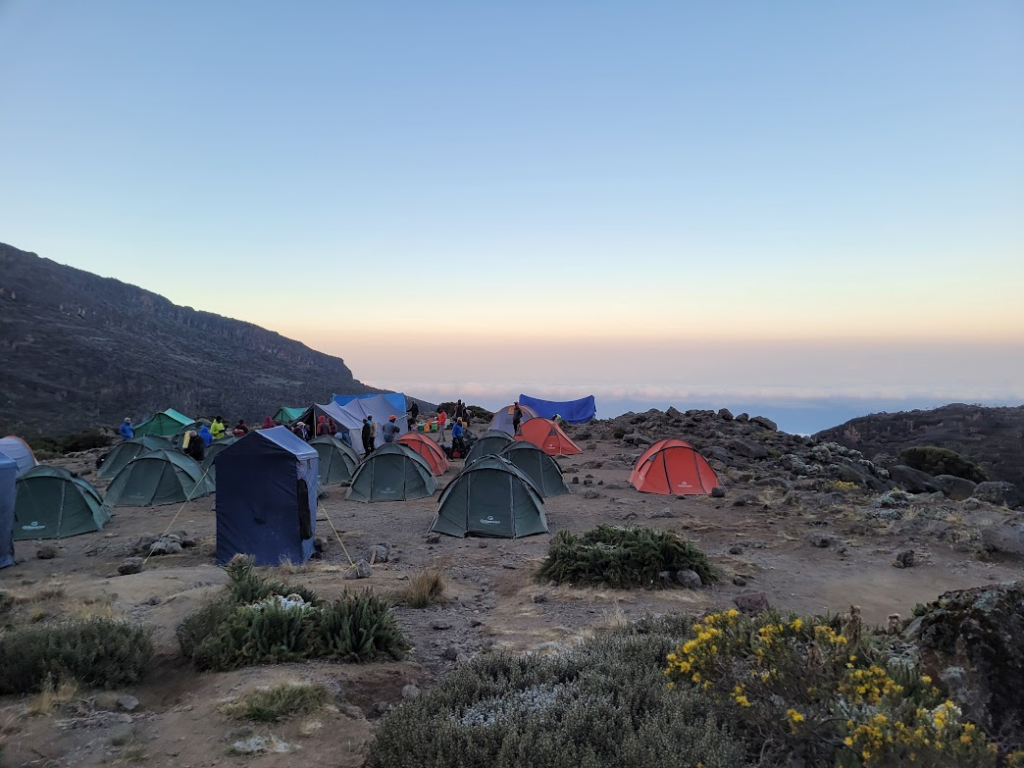
Dinner was at 7.30 pm. Slept at 8.45 pm.
Key Observations:
- Baranco is a large camp. Many routes (Machame, Lemosho and Umbwe) routes meet here.
- We were already above the clouds. We could see a blanket of clouds below us.
Day 4: Sun, July 23: Baranco Camp to Karanga Camp via Baranco Wall
We started the trek at 7.45 am. We got our customary morning group picture.

As soon as we left the camp, immediately, the first climb was the Baranco wall. It is a cliff face with lots of rock scrambling. It took us about 1.15 hours to get to the top of the wall. There were lots of false tops. We kept climbing for a while, one top after another, it seemed that the final Baranco wall top would never come.
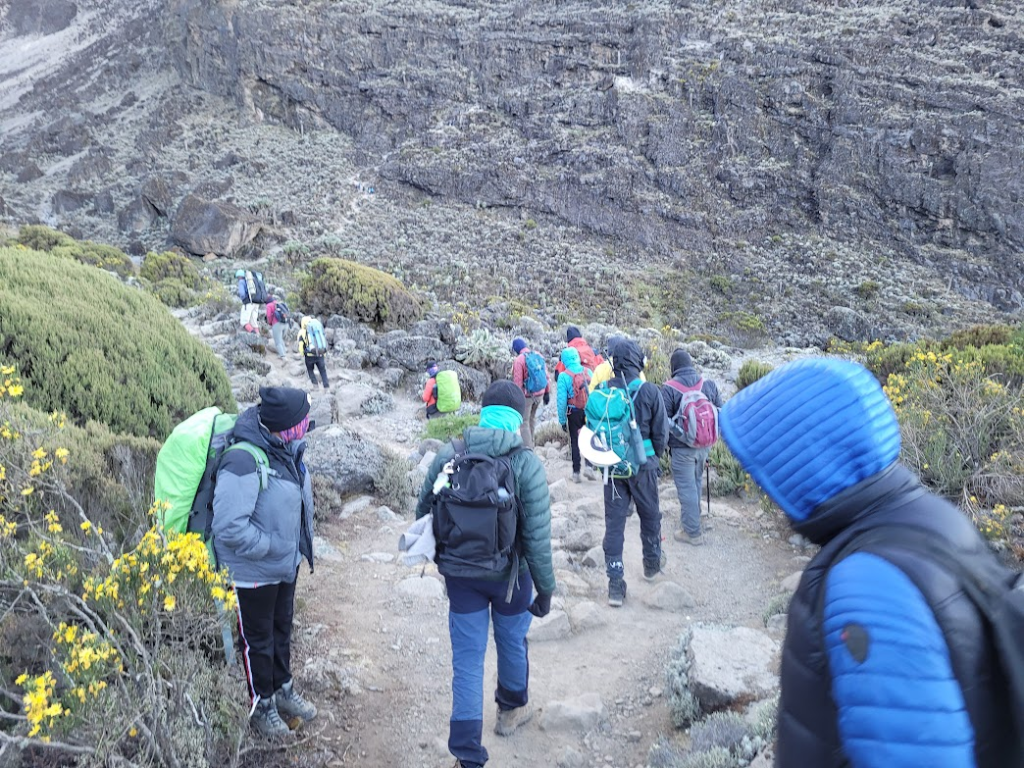


We came across a rock where we had to hug it to cross over. It is called “the kissing rock”.
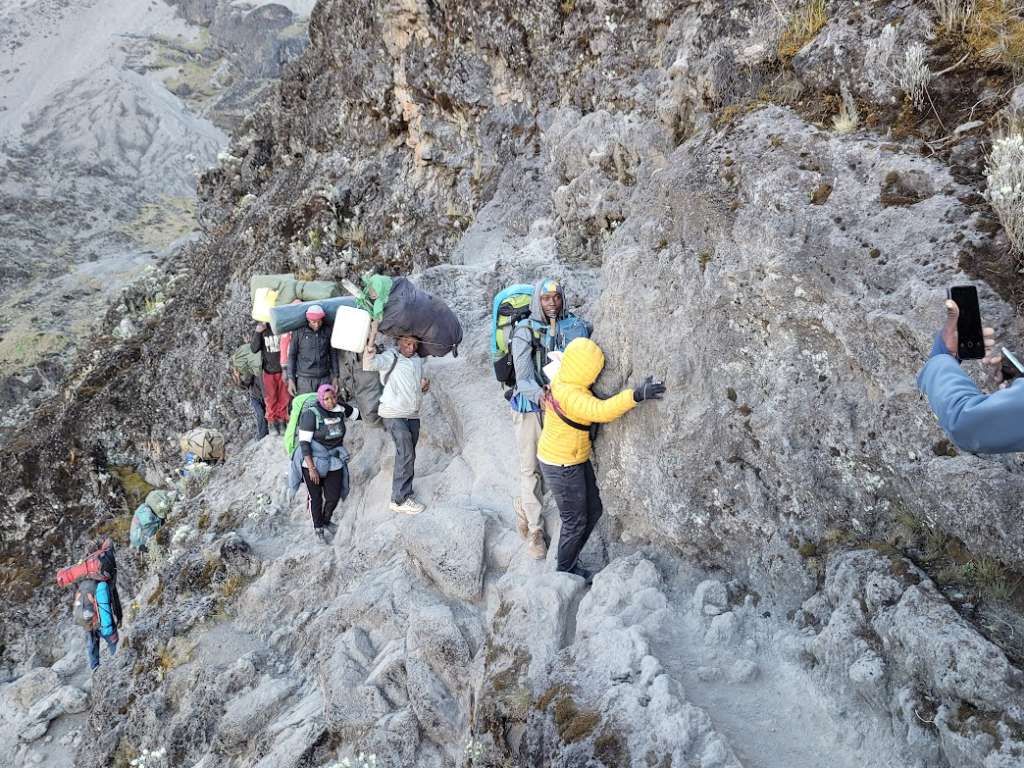
At the top of the Baranco wall, we took a lot of group pictures.

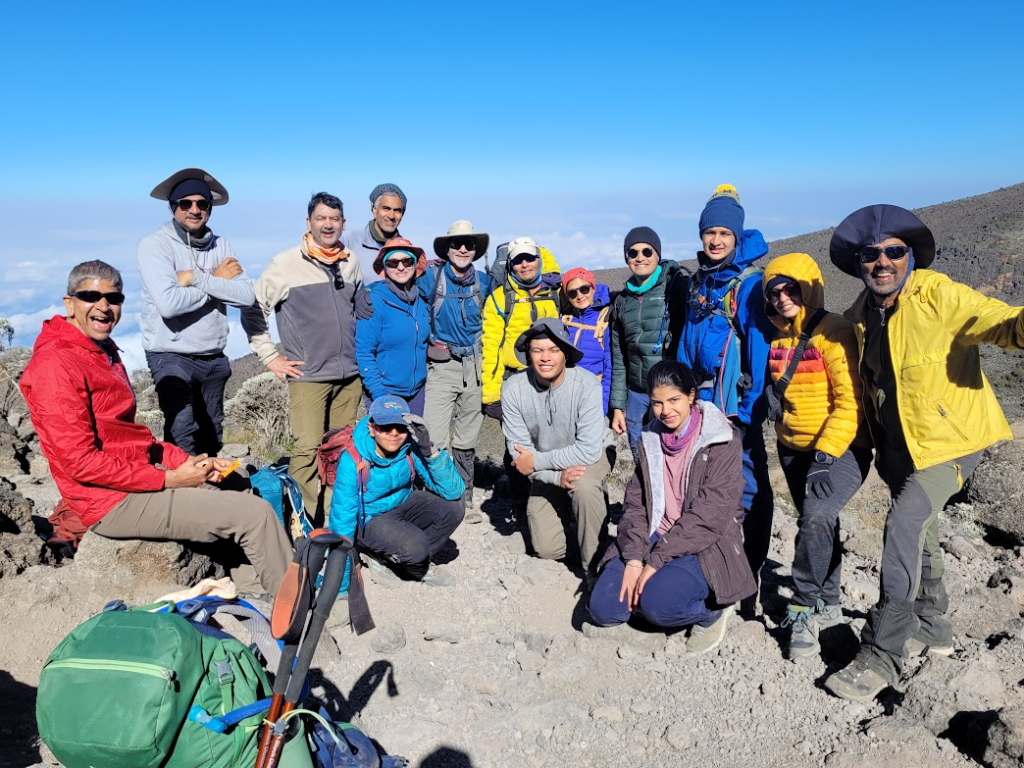


Our team members also took pictures with high jumps so that they would look as if they were flying. They really enjoyed themselves. We had clear blue skies.


We thought that once the Baranco wall was done, there would be no more climbs. But we had 3 major climbs before we got to Karanga camp. The last climb was the steepest and the hardest (psychologically 😊).


We reached Karanga camp at 12.54 pm.
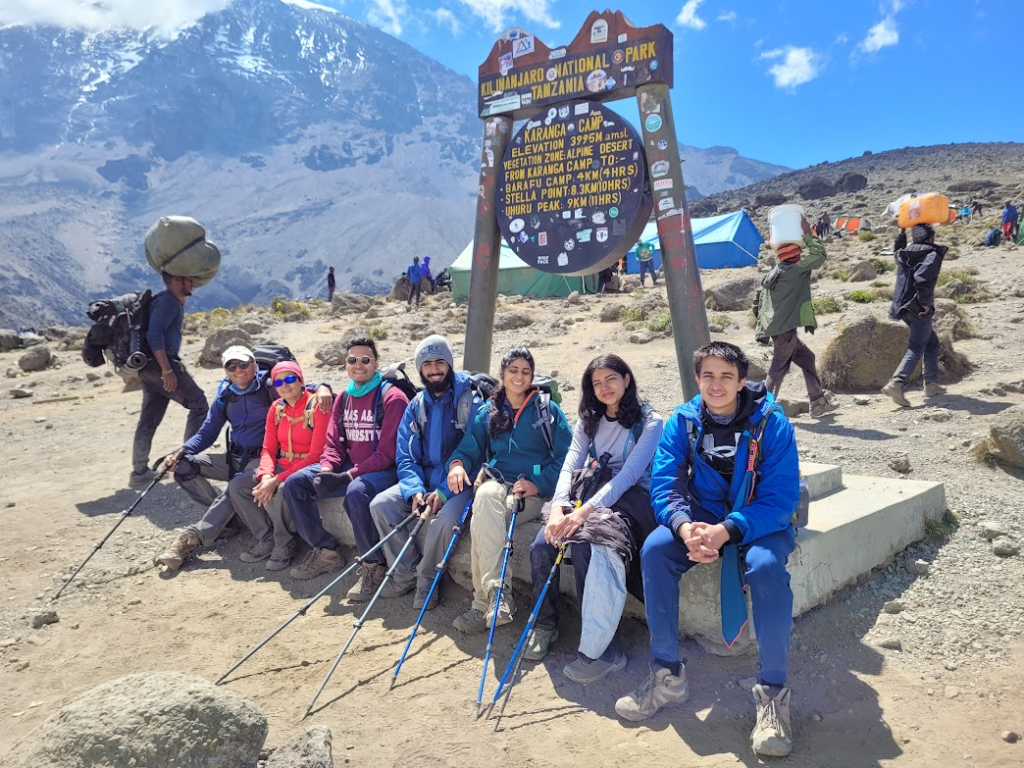
We ate lunch around 2.30 pm. We were quite tired.
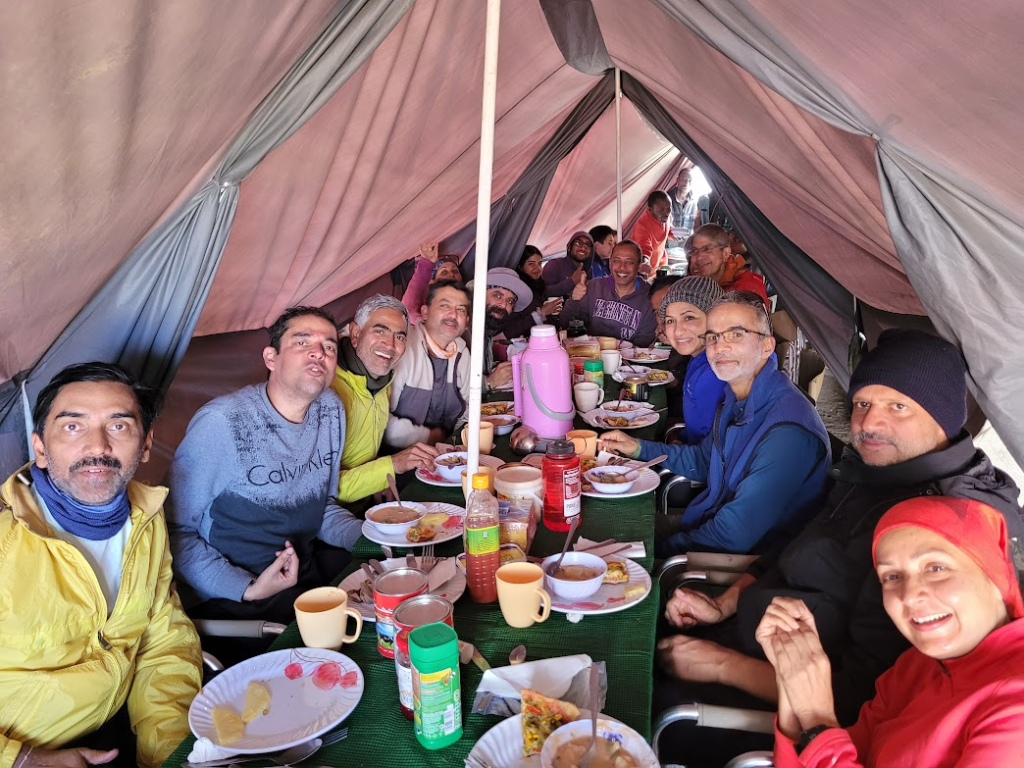
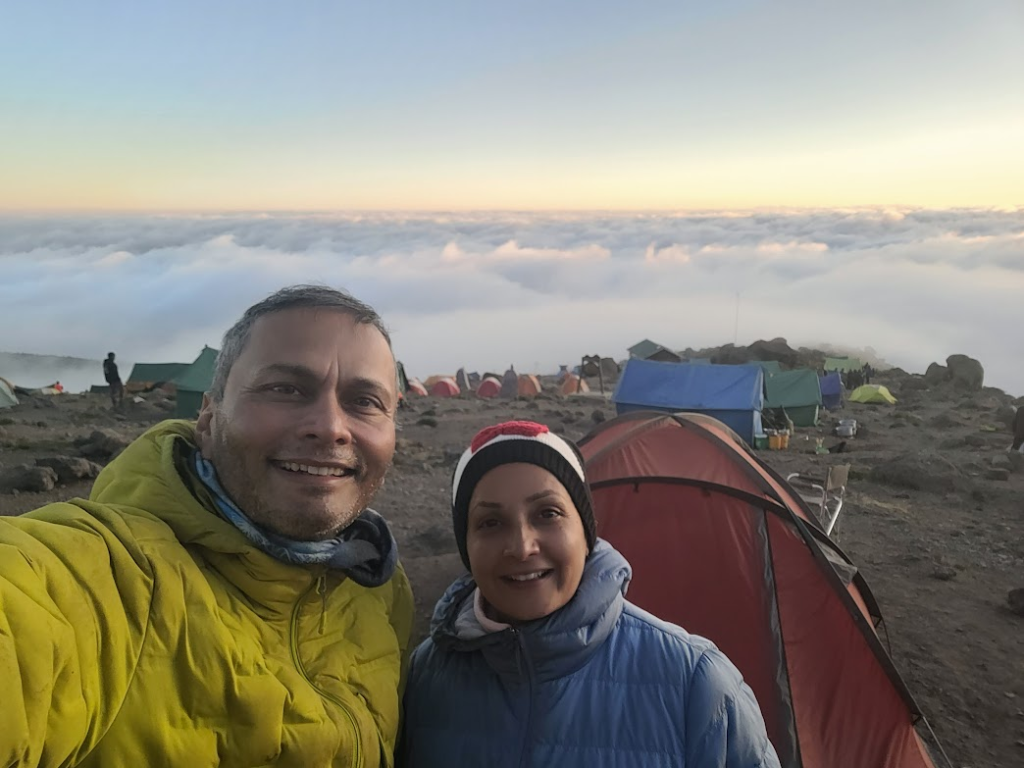
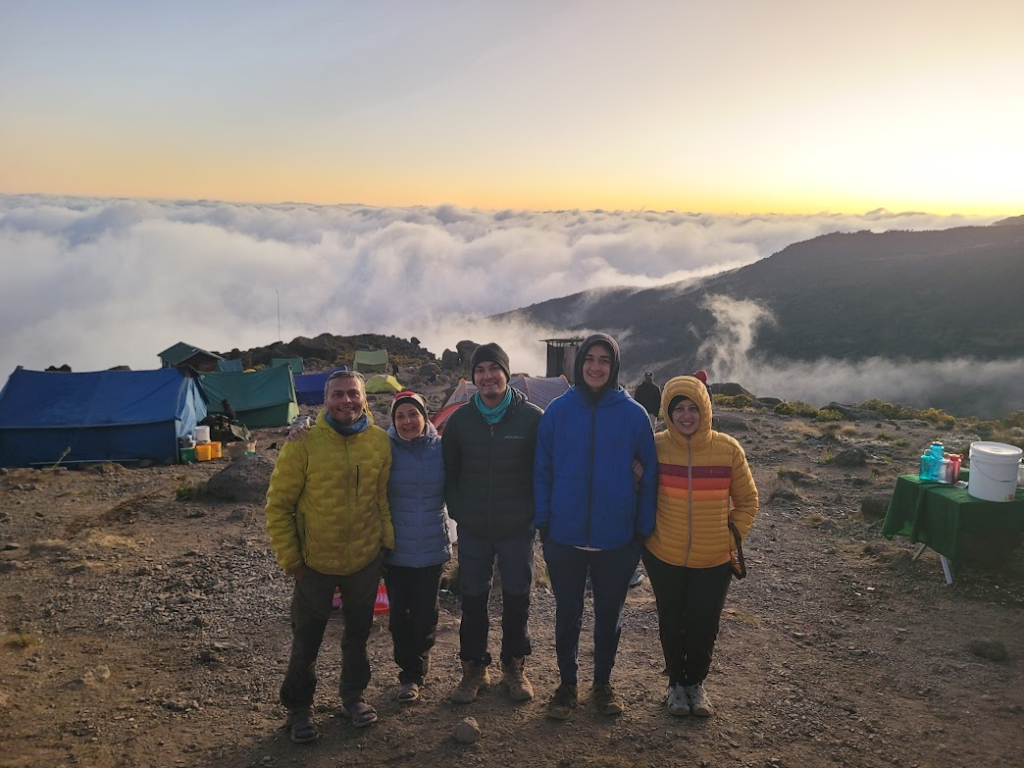
Dinner was around 7.30 pm. Sleep at 8.45 pm.
Key Observations
- Baranco wall is not as difficult as it looks. The path up the Baranco wall is relatively straightforward and not very dangerous. Similarly, the kissing rock is not as dangerous as it is made out to be.
- Avoid using trekking poles while climbing the Baranco wall. We had to clamber up the wall using both hands and feet.
Day 5: Mon, July 24: Karanga Camp to Barafu (Base) Camp
This was the last leg to the base camp. We started the trek at 8.17 am.
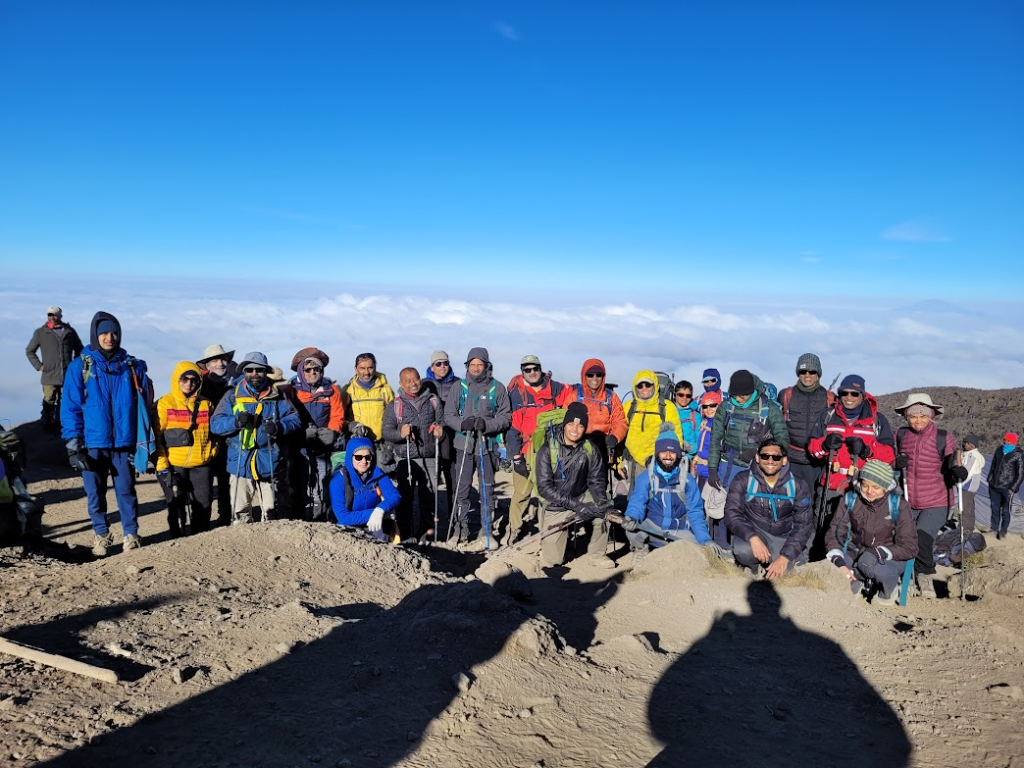
There were 3 major ups and downs.
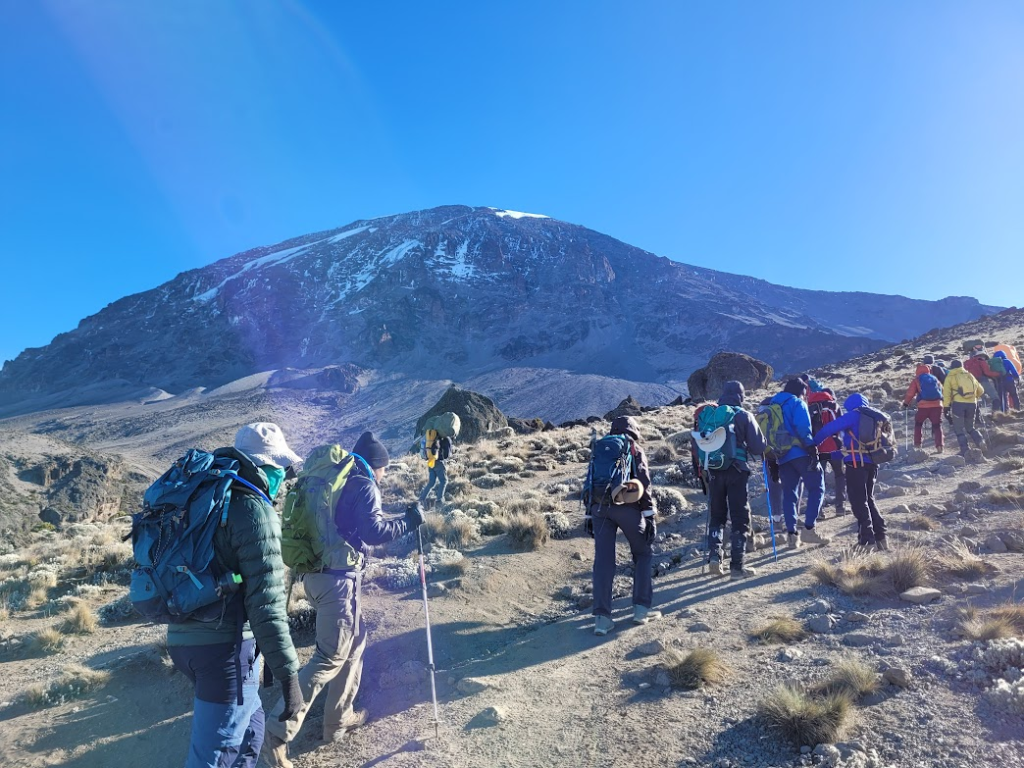
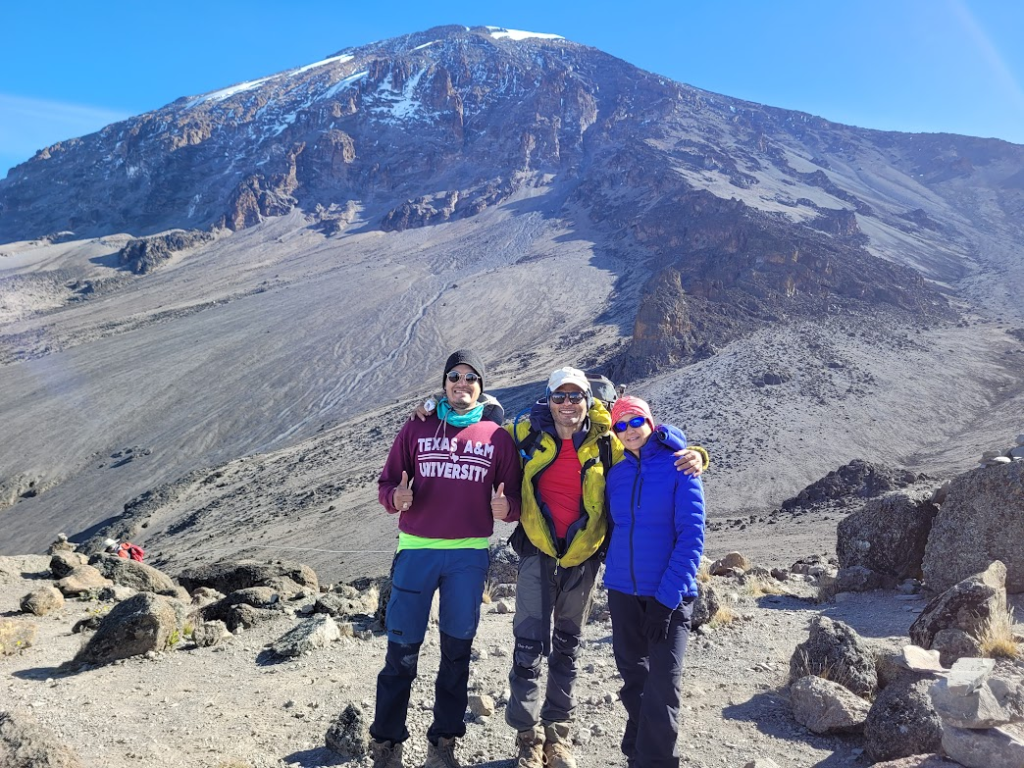
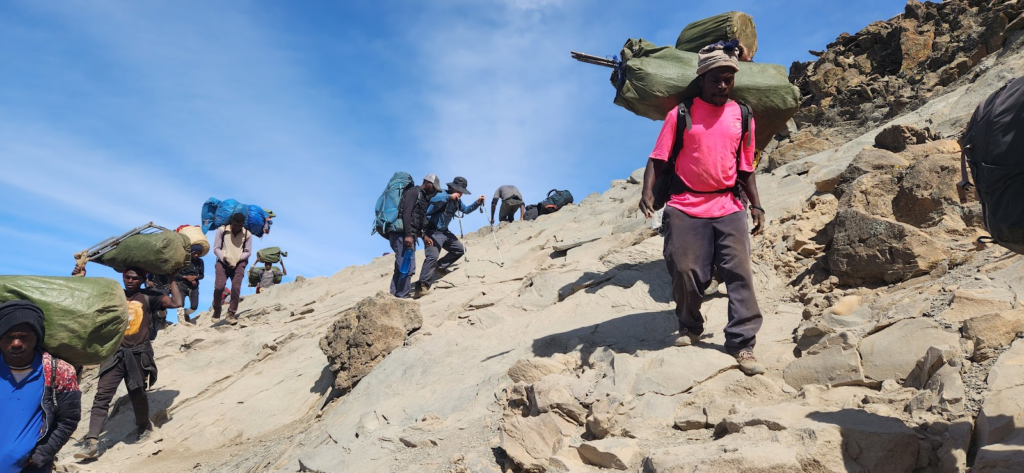
Mt. Meru (14,968 ft) was visible from our trek route.

We wanted to finish the trek early so that we could rest and be ready for the summit climb. We reached the campsite at 11.35 am. It was a short trek about 3.15 hours.
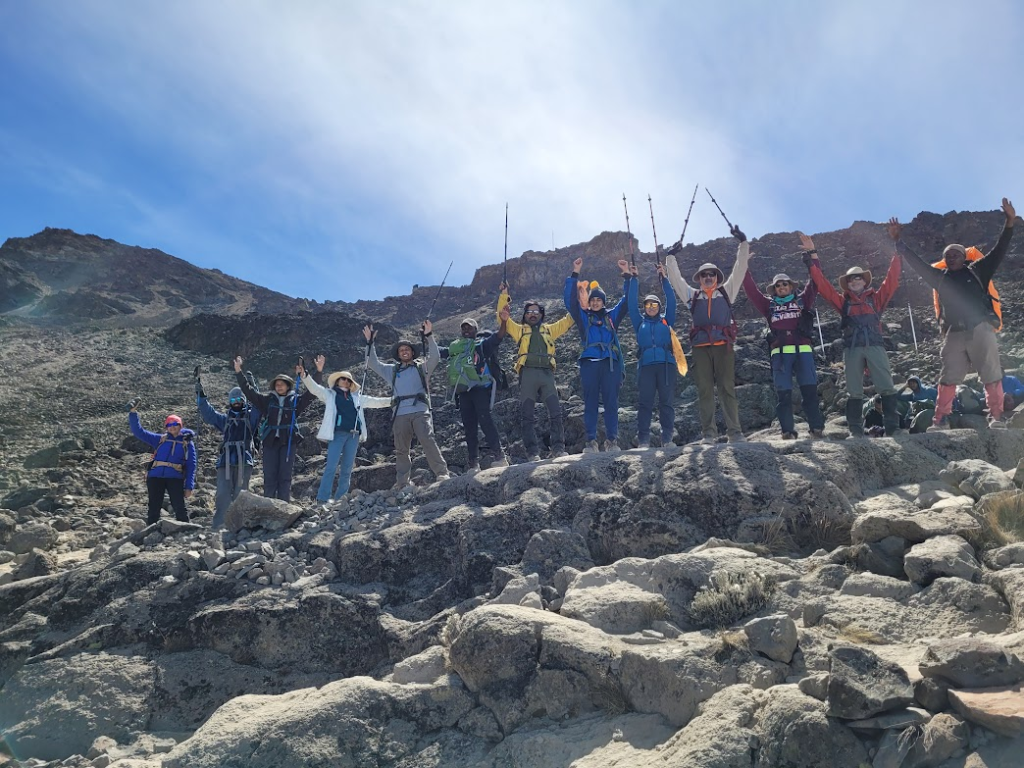
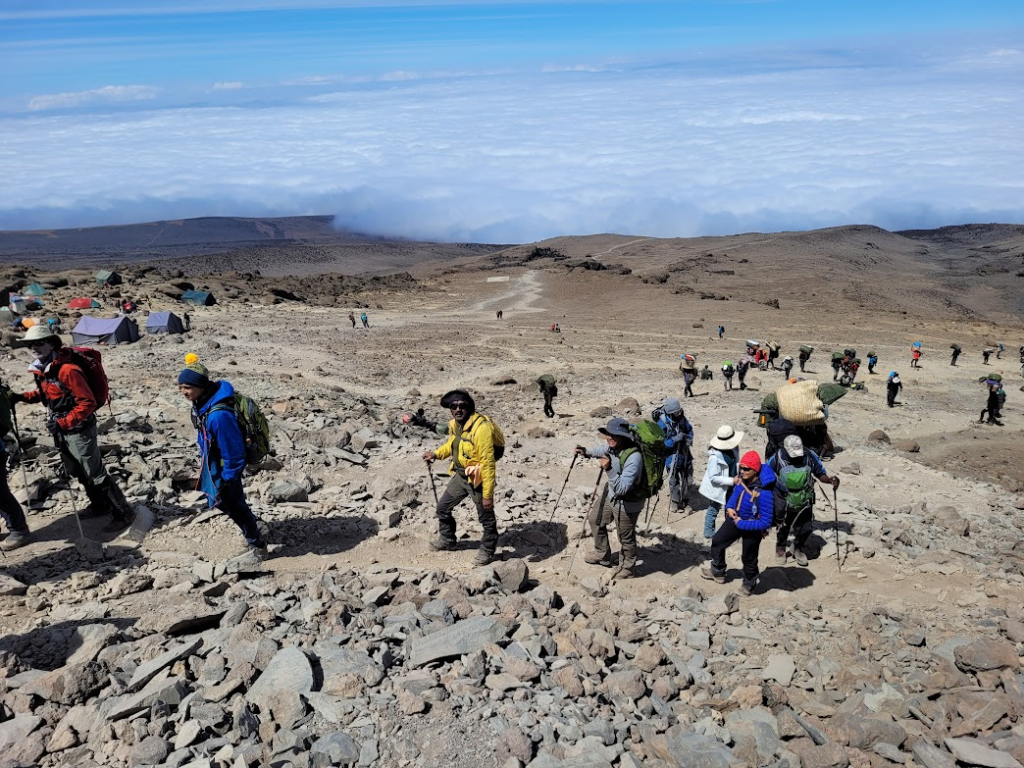
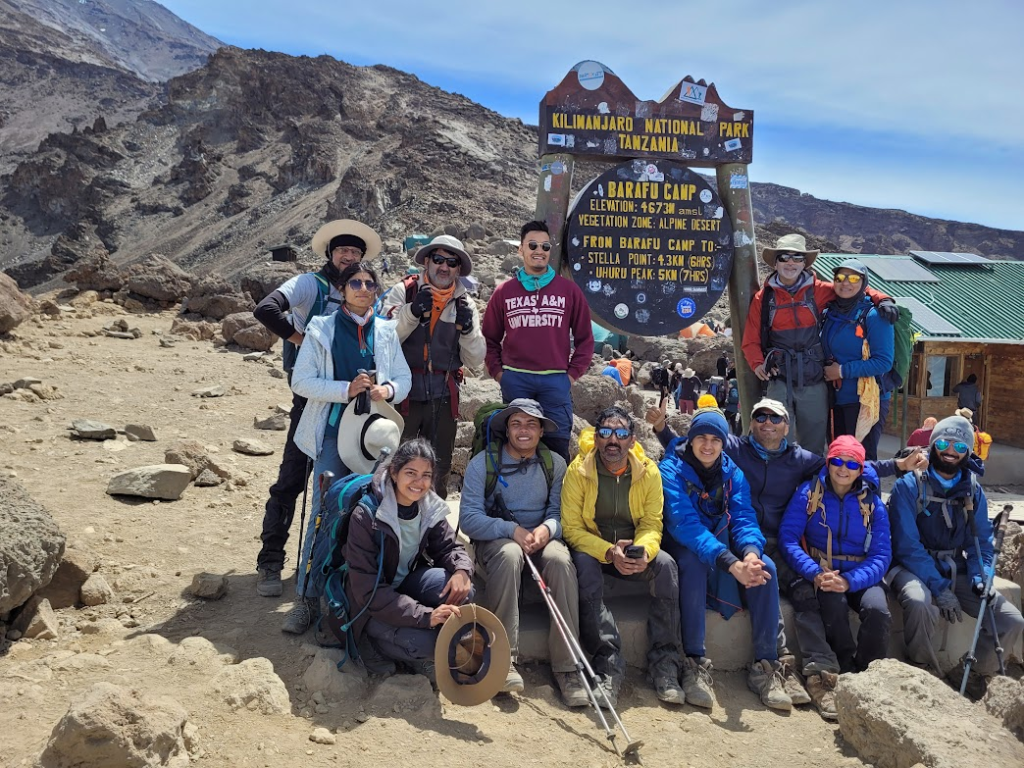
Barafu camp has cell signal. They have run a physical wire all the way up the mountain and put cell towers. We could see the black wire in some places.

Barafu campsite is on a slope. We had to climb up and down from our tents to the kitchen tents. It is a difficult task at that altitude.
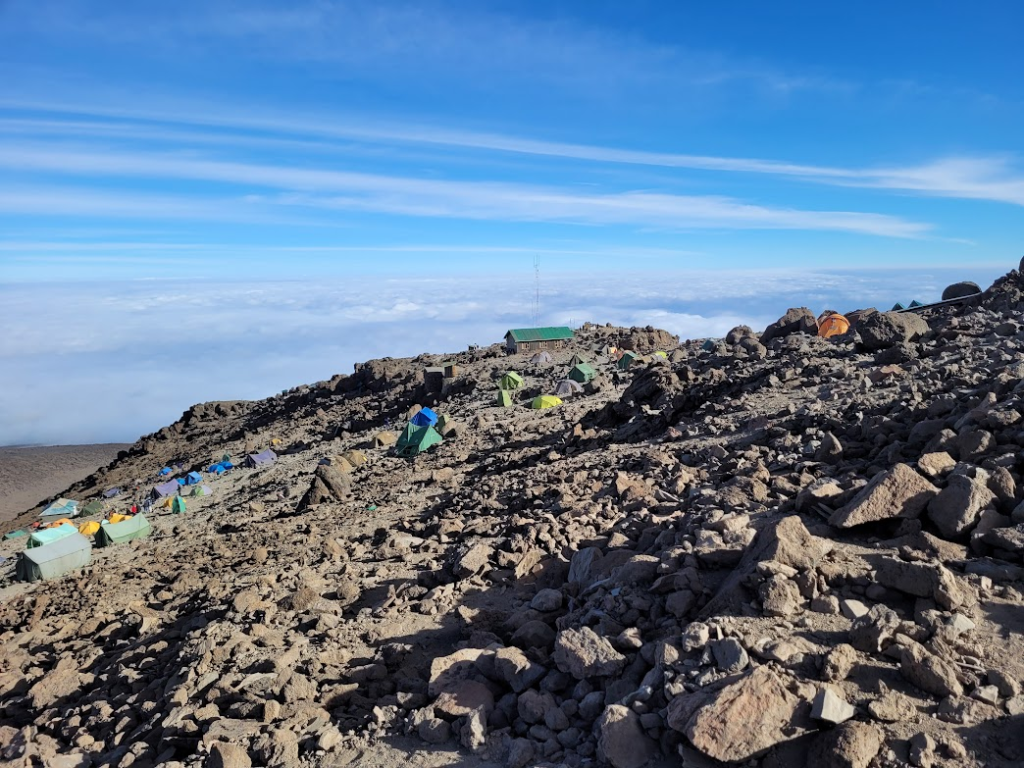
Mt. Mawenzi (16,893 ft) was visible from Barafu.
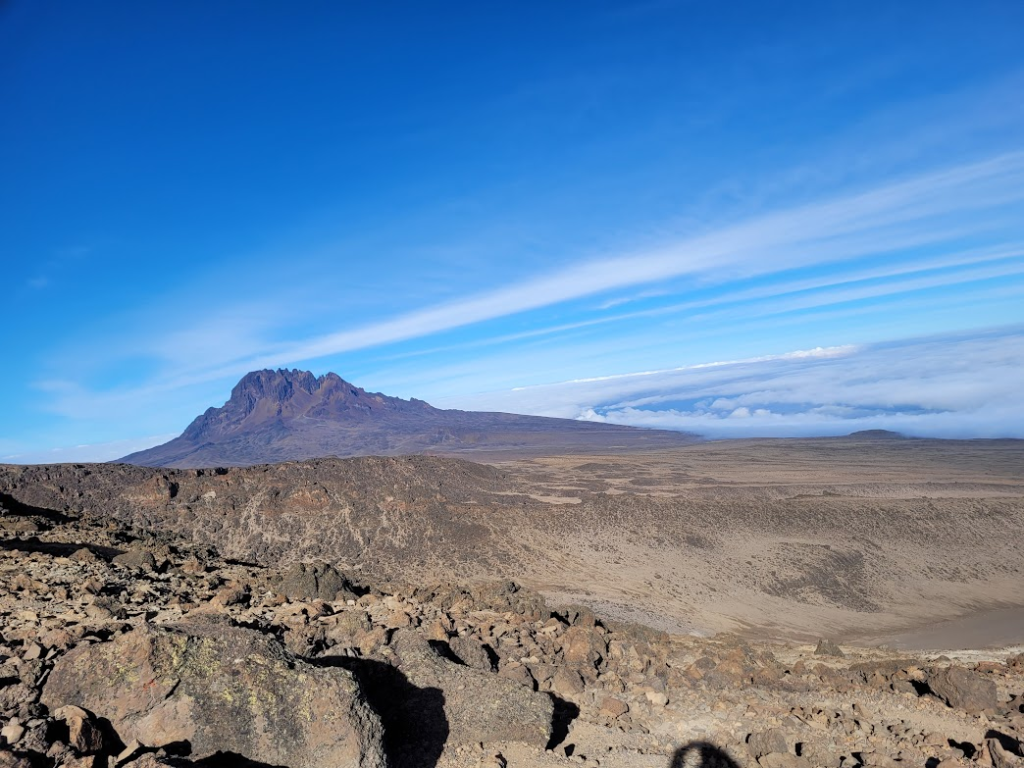
We waited for everyone and ate lunch at 2.30 pm.
Acclimatization trek at advanced base camp started at 4.17 pm. We climbed about 700 ft to Advanced High Camp, also known as Kosovo High Camp (15,978 ft). It was a difficult climb with lots of clambering up the rocks. We were back at Barafu camp around 6.15 pm.
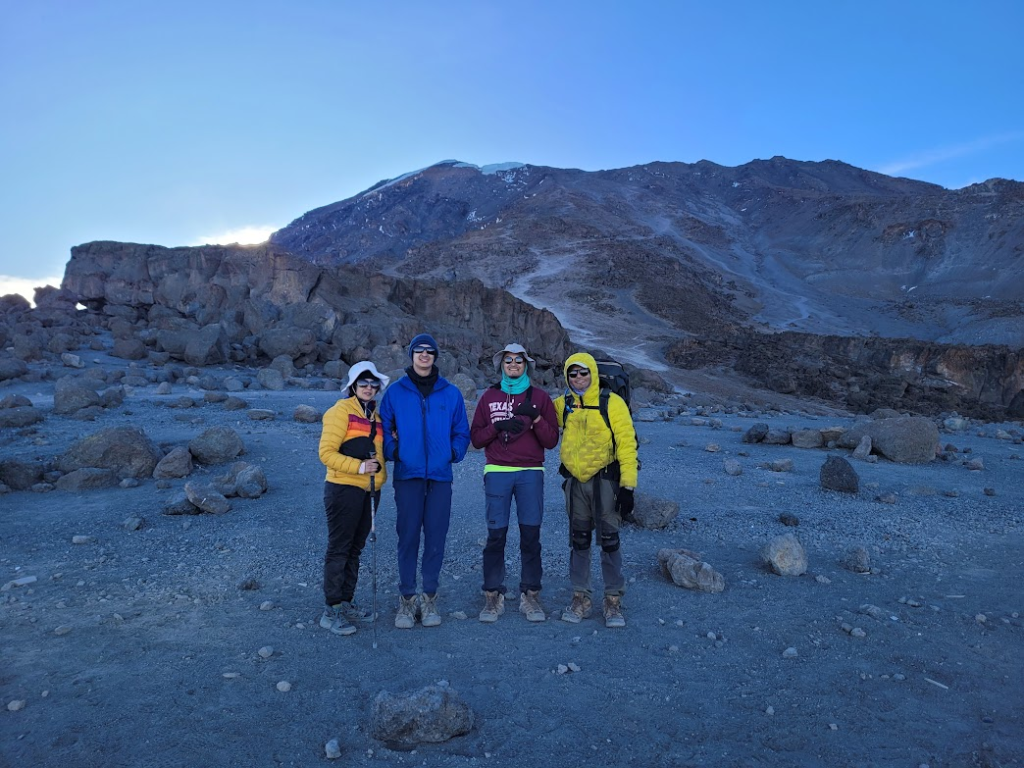
Our plan was to rest all of day 5 and day 6, and then do the summit attempt on the night of Day 6. This would give the climbers 1.5 days of acclimatization and rest before we did the summit attempt. This was particularly necessary to maximize the summit percentage.
We had dinner at 7.30 pm. Sleep at 8.45 pm.
Key Observations
- Barafu campsite is on a slope. So lots of up and down climbing from dinner tent to our personal tents.
- This 1.5 days of rest really helped the tired climbers recuperate and acclimatize. This increased our summit percentage.
Day 6/7: Tue/Wed, July 25/26: Barafu Camp to Summit to High Camp
Four of the trekkers decided that they were feeling strong enough to make the summit attempt on the morning of Day 6. Ramesh, Akshay, Madhu and Rajeev left at 6.25 am on Day 6. This strategy meant that they had to be back within 12.5 hours by 7 pm, which was a restriction just in case someone got hit with altitude sickness. There was no room for error. The positive side was that they were doing the summit attempt in sunlight which meant it was not as cold. It turned out that they finished strong and they were back by 3.30 pm, well before dark.
The remaining 25 trekkers decided to start at 10.20 pm on Day 6, after many calculations to ensure that we would catch sunrise at the summit. We just lounged around the whole day doing nothing. Our stomachs were fluttering in anticipation.
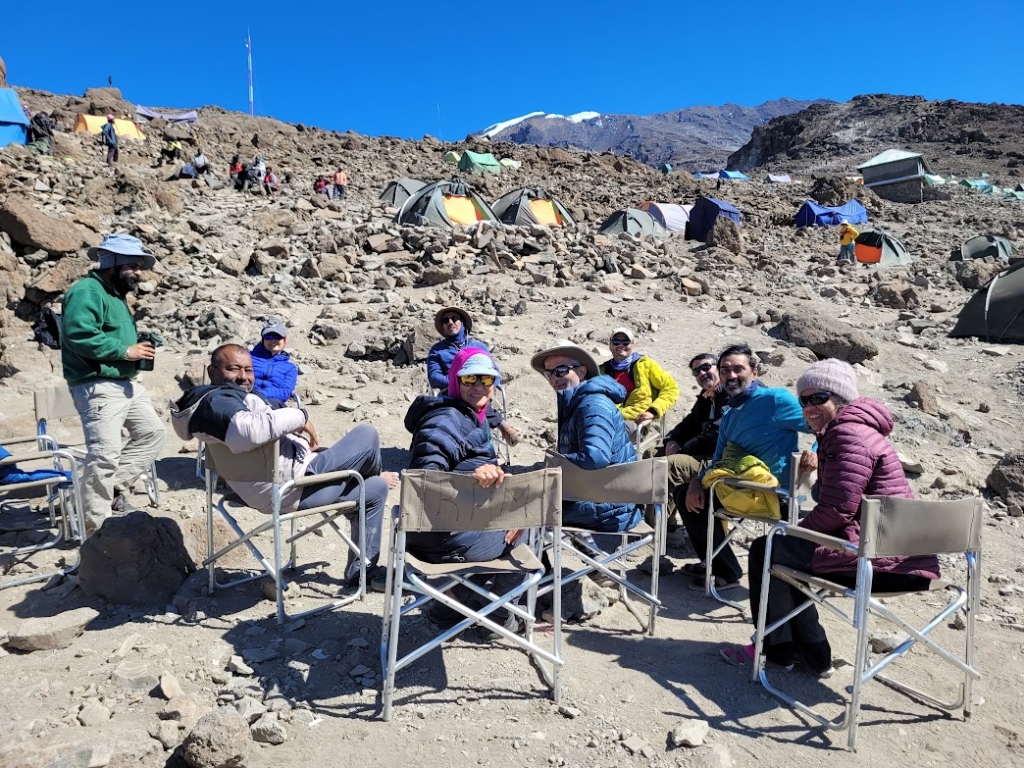
Girl power was evident eagerly waiting to climb the peak.
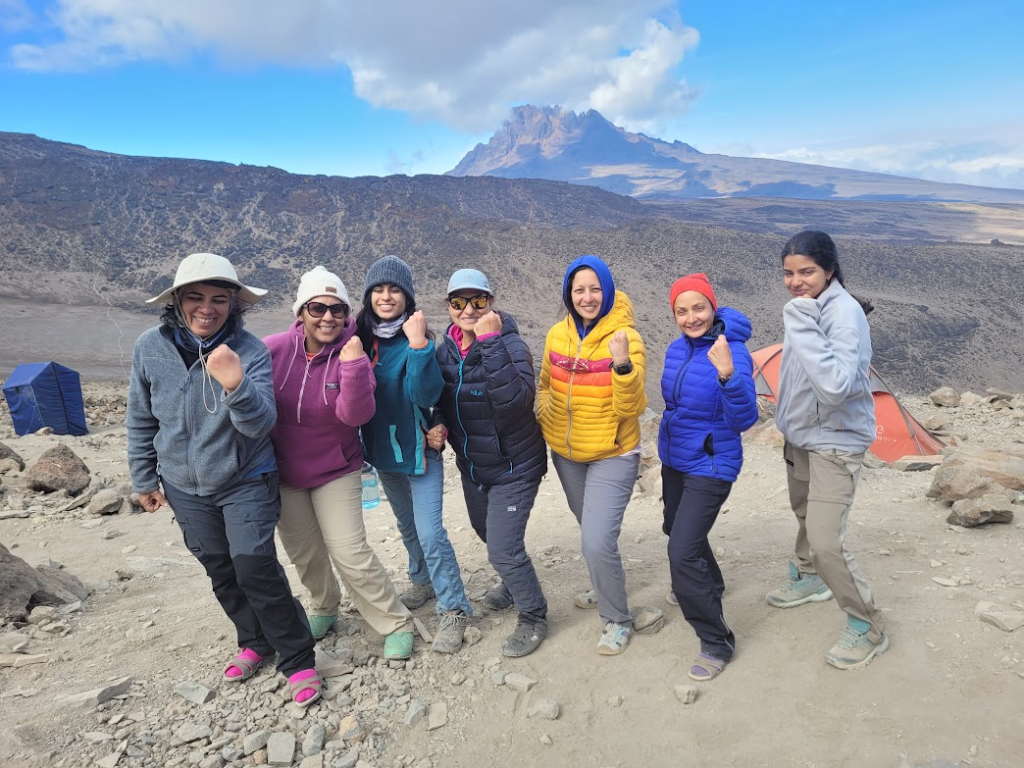
The climb at 10 pm started in earnest.

We had a guide called Bob, who was pacing us perfectly. He was called Bob-Bob-Bob for some reason. The 4,000 ft climb was unending. The skies were clear and beautiful, but it was cold. We had many layers on us, but it was not enough. I estimated that it was around -10C.

We had 1-1 assistance with porters. We had one porter per person who offloaded the backpacks. That made walking lighter and easier.
Bob was pacing us very well, occasionally, stopping for rest after every 30-45 mins. We could only see the stars and the lights of other trekkers in the dark. It was not possible to figure out how far we had to go. That turned out to be a blessing. We just kept following Bob’s steps, one step at a time.

Between 2 am and 4 am on Day 7, as we had been walking for almost 4 hours, we were all beginning to feel very sleepy. We were almost dozing off while walking. It was not clear if it was the lack of sleep or the lack of oxygen at that altitude. At that altitude, oxygen is about 40% of that at the sea level.
Guides and porters were singing the Kilimanjaro song. I was saying “Jaagte Raho” to keep myself and others awake. But we kept going.
As we approached Stella Point, Anu was almost sleepwalking. The guide held her arm and guided her to Stella Point and beyond that to Uhuru peak.
At 5.30 am on Day 7, we reached Stella Point (18,885 ft), which is considered as the first summit point. We began to see the beautiful sunrise at 19,000 ft.
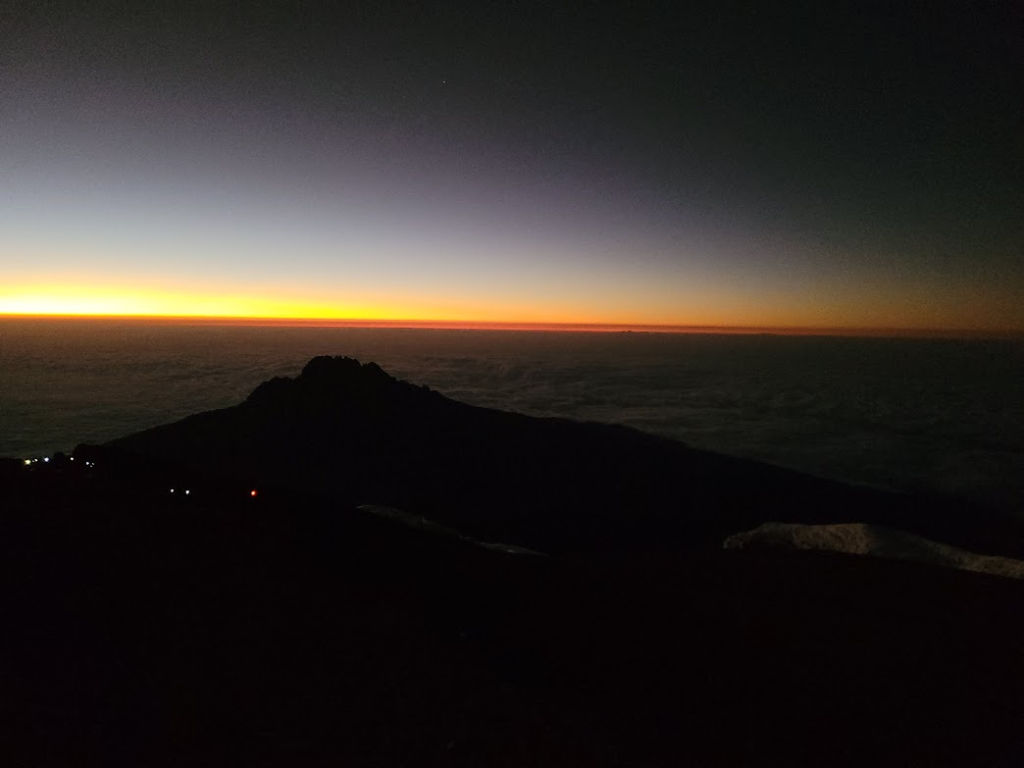
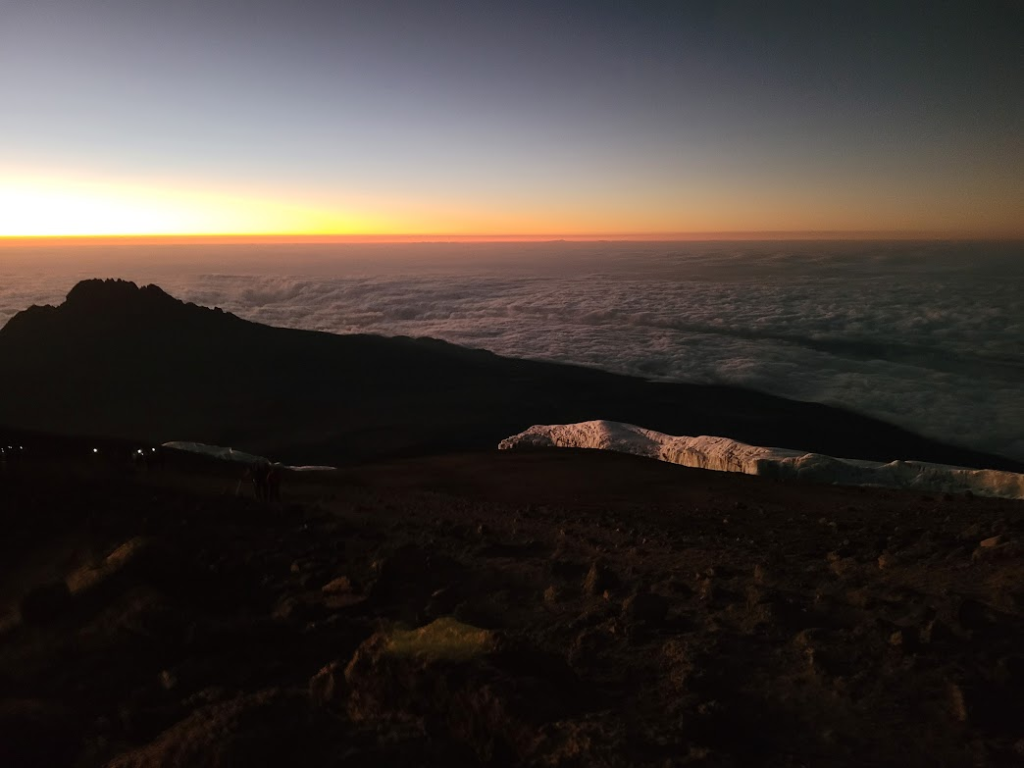
We then continued on to Uhuru (Freedom) Peak, which is the second summit point at 19,341 ft. This was our ultimate destination. We reached Uhuru Peak at 6.30 am, just in time for the sunrise at 6.45 am. We got some stunning views, as we saw the sun rise from 19,341 ft, something we had seen only from an airplane before.
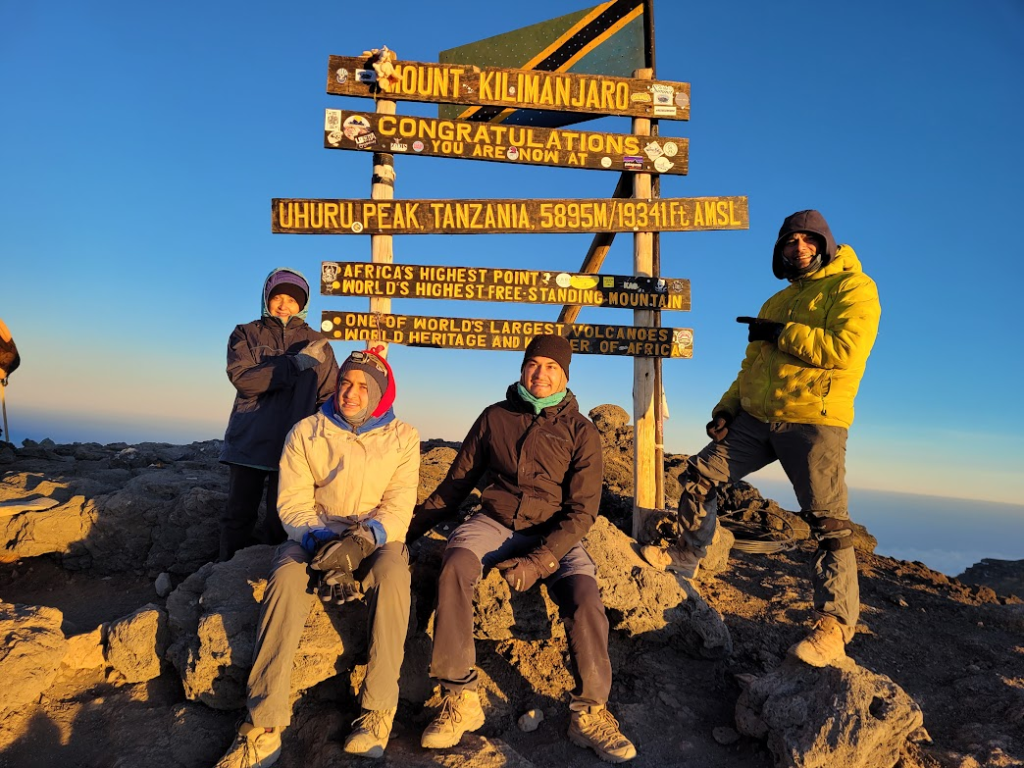

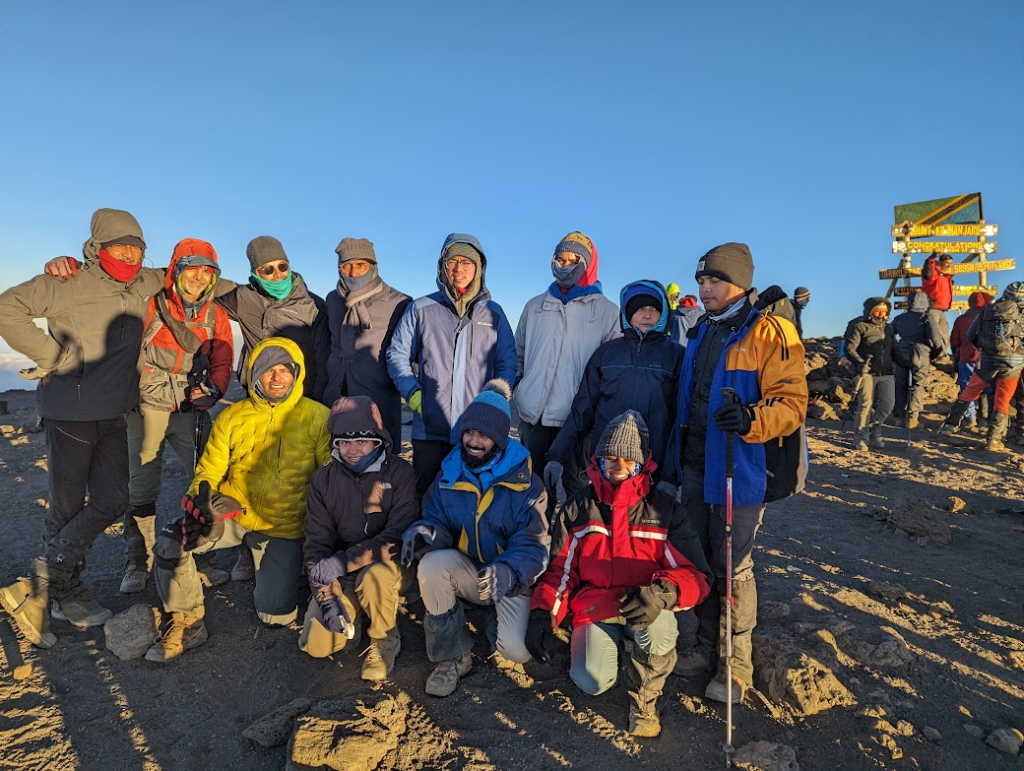


We spent about 35 mins at Uhuru peak, took lots of pictures and then we descended towards Stella point. We took some pictures at Stella point and then started descending at 7.30 am.
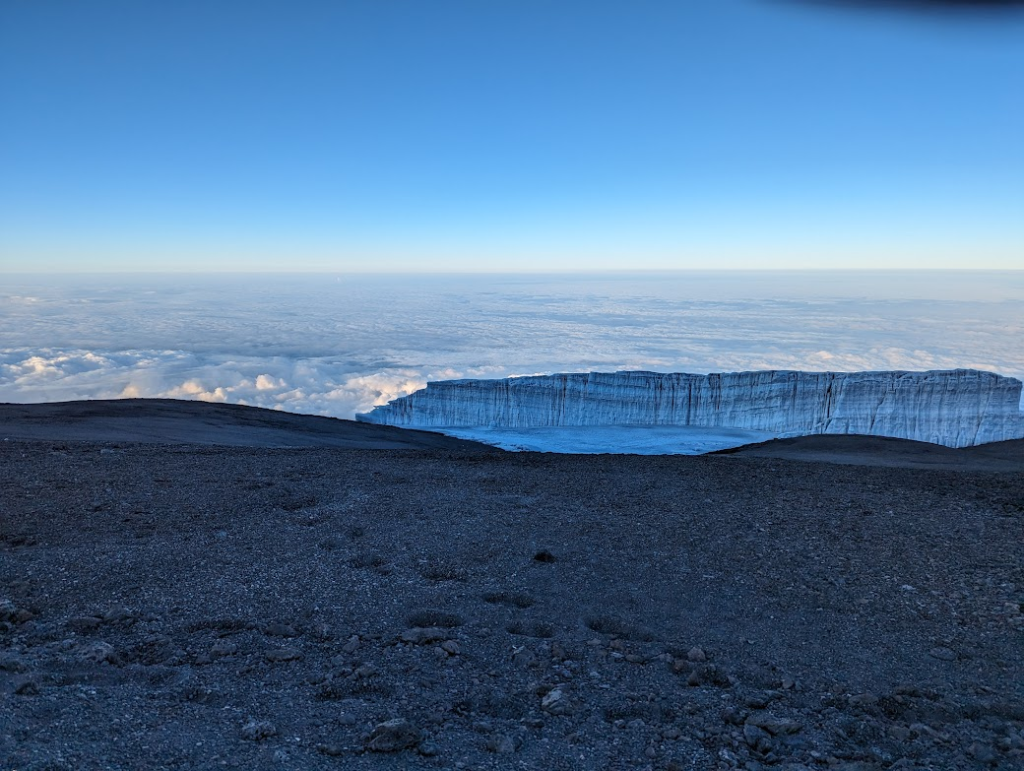
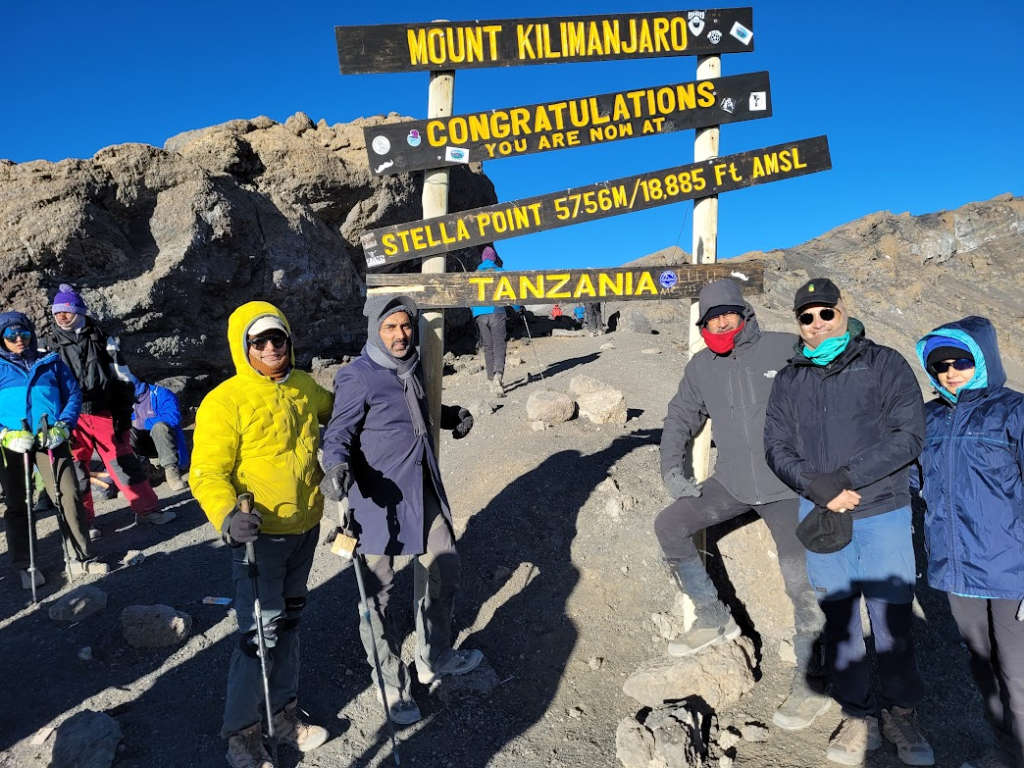
While descending, we could see what we had climbed. It seemed incredible that we climbed so much in the dark. The path down was soft dirt. But I could slide down by digging in my heels. It was quite quick.
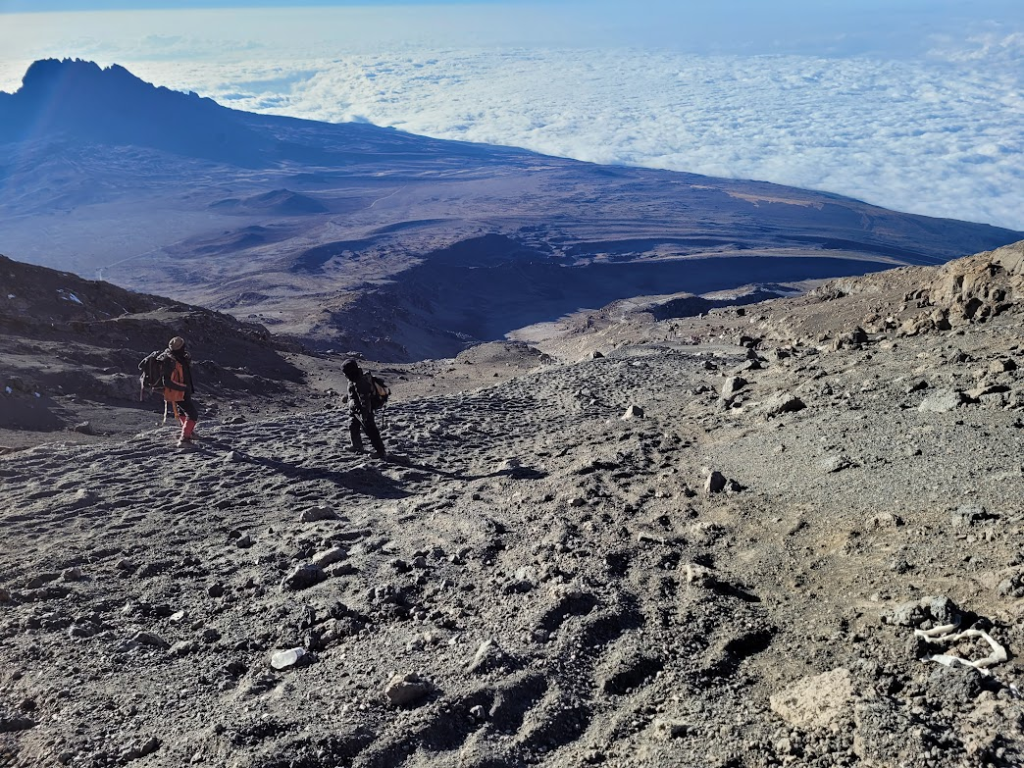
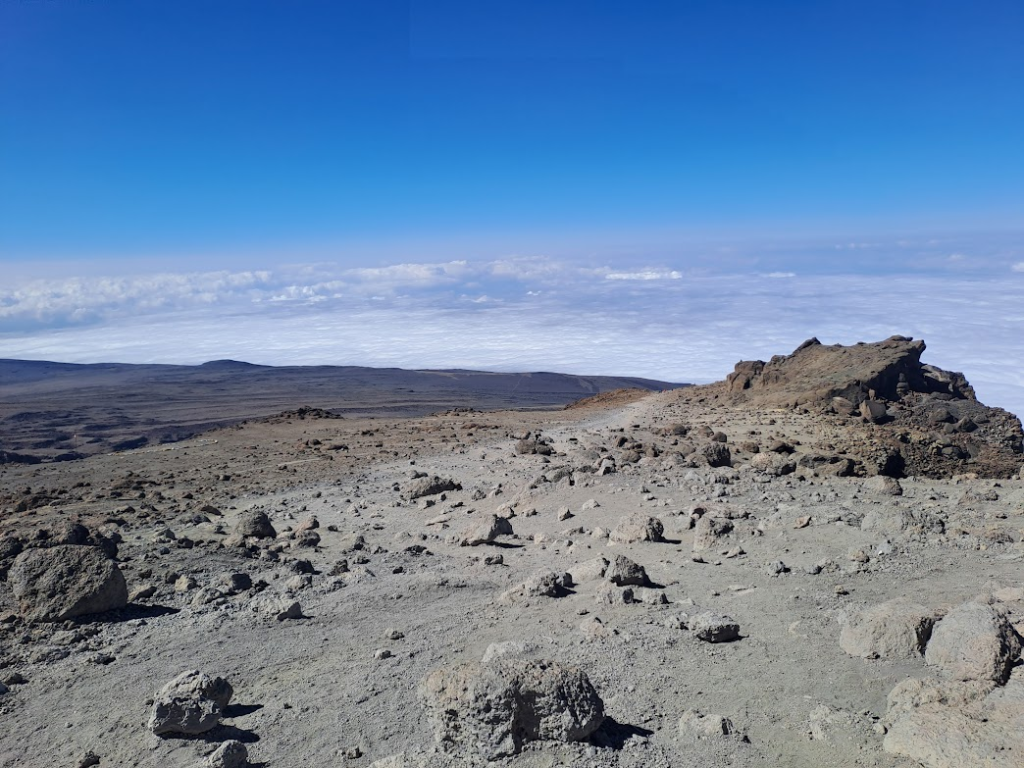
At around 9.05 am we were at Kosovo High Camp (15,978 ft) and Barafu camp (15,200 ft) was in sight. There was a feeling of elation, and our pace accelerated. We were down at Barafu camp by 9.30 am.
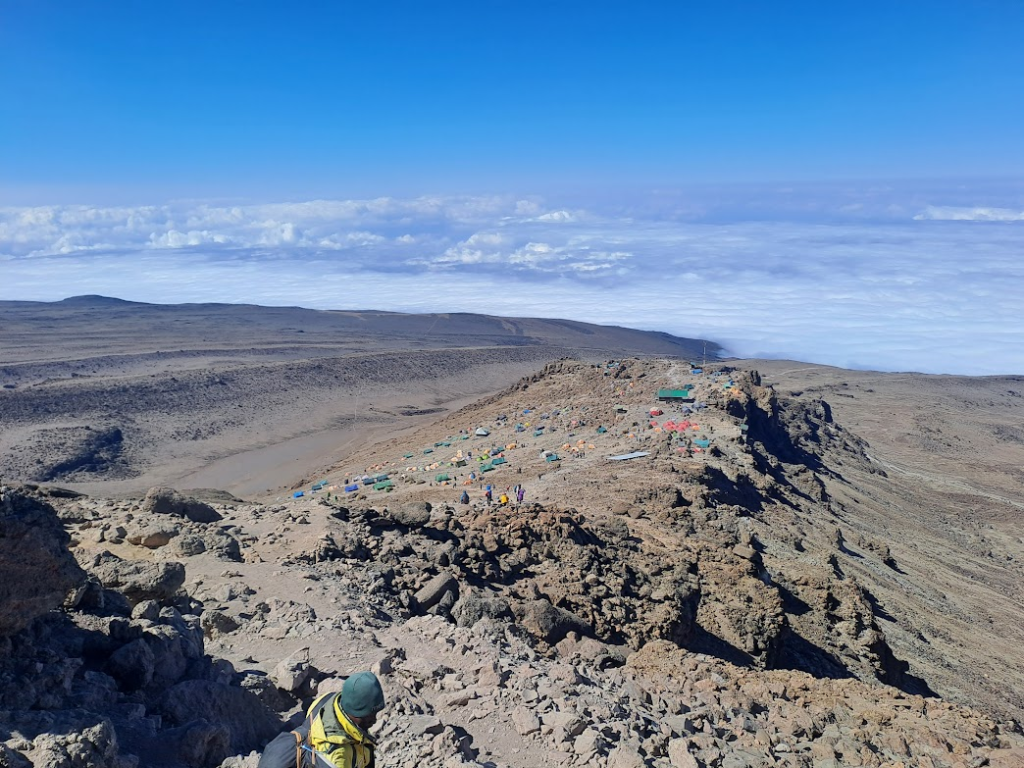
We had spent slightly more than 11 hours in the summit attempt. It was hard, but it was worth it.
We waited there for a while, but realized that some our team members may take some time. We ate lunch at around 11.30 am and left Barafu camp at 12.30 pm to reach Millenium High Camp (12,532 ft) by 2.30 pm (4 km in 2 hours) over very gradually descending terrain.
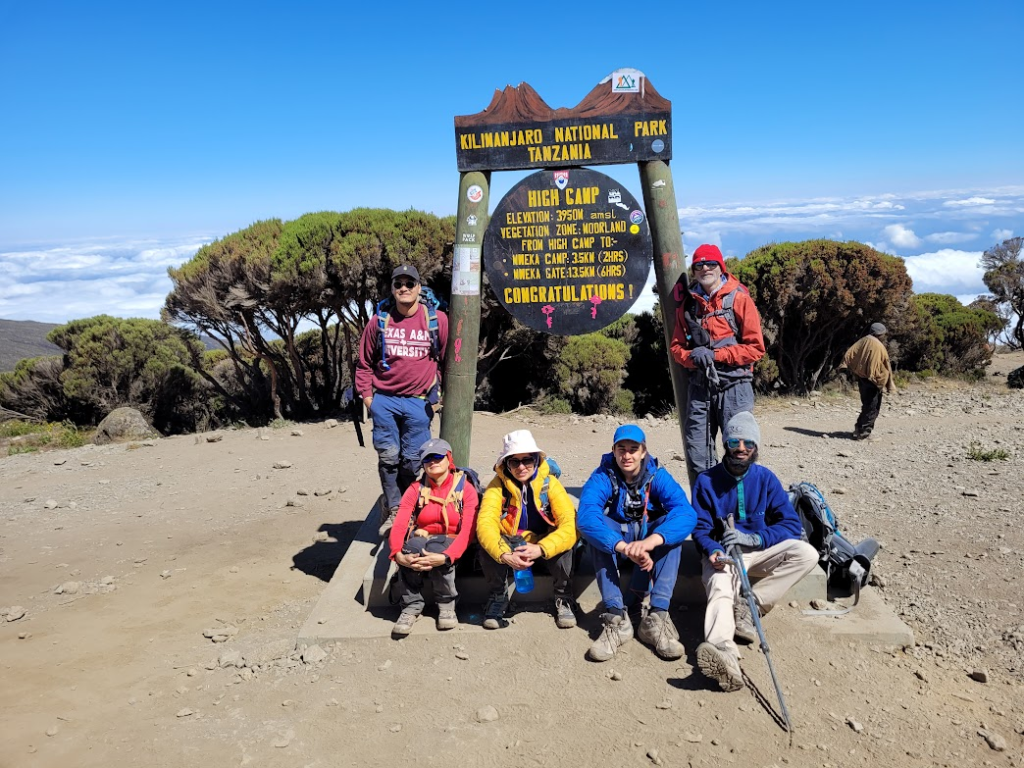

Some of the other members in the group reached Millenium High Camp at around 6.30 pm. They had been on their feet for 20 hours, tired, drained, but they did not give up. They completed the summit attempt successfully. Kudos to them for fighting hard and not giving up!
There was this great picture when Inder and Ronak hugged to celebrate their successful summit. Beautiful father and son moment.
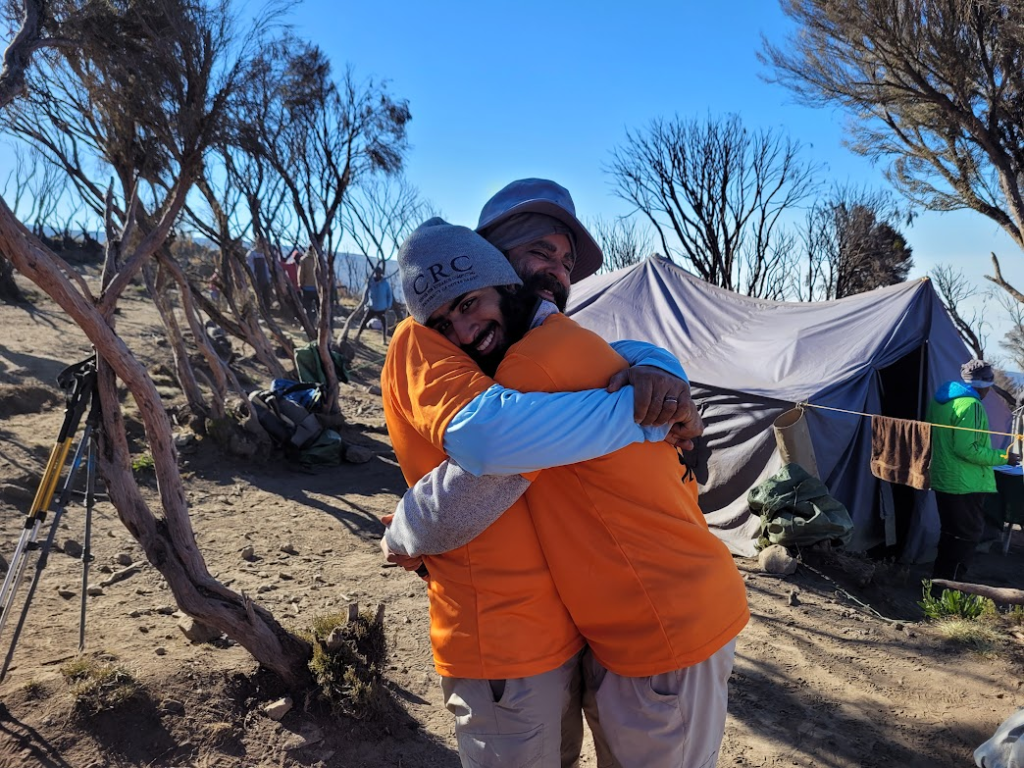
Overally, 26 out of 29 trekkers in the group successfully summitted Mt. Kilimanjaro, a nearly 90% summit rate for such a large group. Truly creditable!.
We were all happy to be at Millenium High Camp. People were cold, some were coughing, but we had all made it.
A slightly concerning incident occurred at around 7 pm. Amitabh Gupta started feeling breathless and uneasy. We talked to Dr. Aparna Bhagwat via Whatsapp and she recommended that he descend immediately. Our trek agency immediately arranged for stretcher rescue, since helicopter rescue was not available at that time.

Amitabh was wrapped in warm blankets, strapped to the stretcher with an oxygen tank and 6 people carried him down to Mweka gate. He reached Panama Garden resort at 2.15 am on Day 8. But he was fine once he went to a lower altitude.
We could see Moshi in the night already from Millenium High Camp.
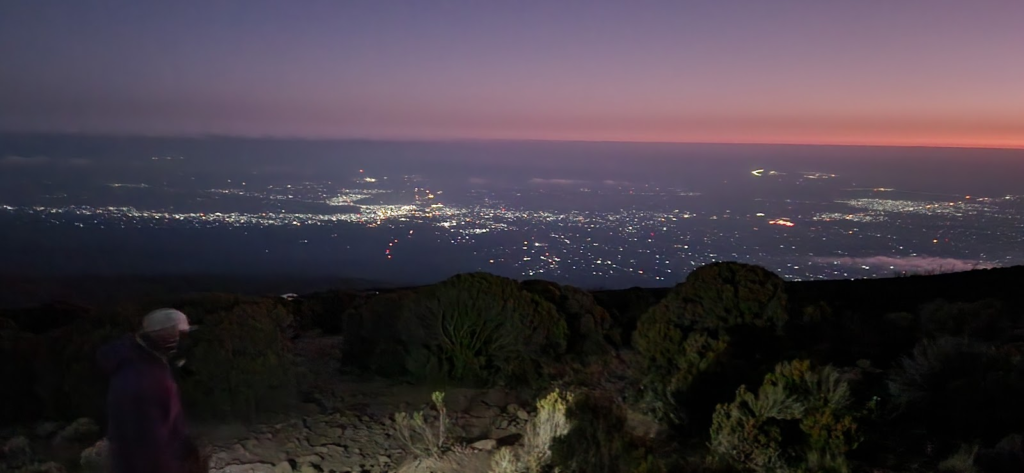
We slept at ease, knowing that the hardest part was done, and the next day was a long, gradual climb down.
Key Observations
- Kilimanjaro is harder than it seems. I am glad that each one of our 29 members had trained hard. That showed.
- While grit is important, safety is paramount. 3 people from our group turned back because they felt uncomfortable at that altitude. While it is disappointing not to summit, that was an incredibly brave and correct choice, putting safety before summit.
- Porters and guides did an amazing job supporting us 1-1, offloading our backpacks. The summit rate would have been much lower without their support. Kudos to them!
Day 8: Thu, July 27: Millenium High Camp to Mweka Gate to Moshi
We had planned to start at 8.45 am but the staff had planned a celebration. They sang songs, we danced with them. It was a lot of fun. We finally left around 9.30 am.

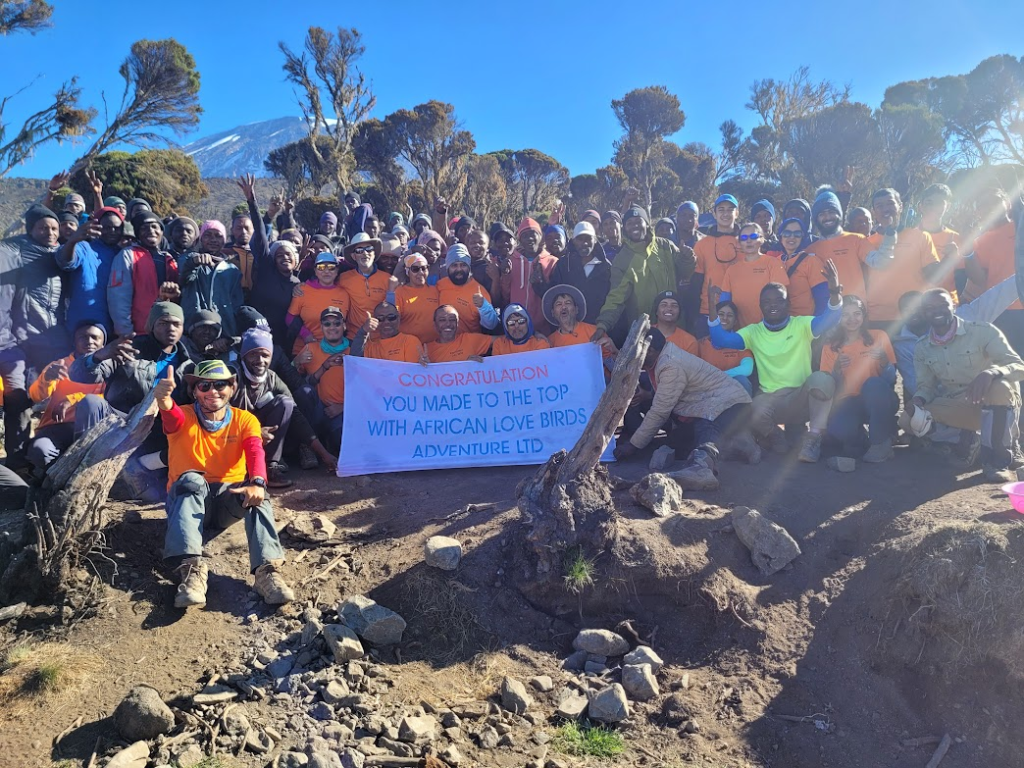
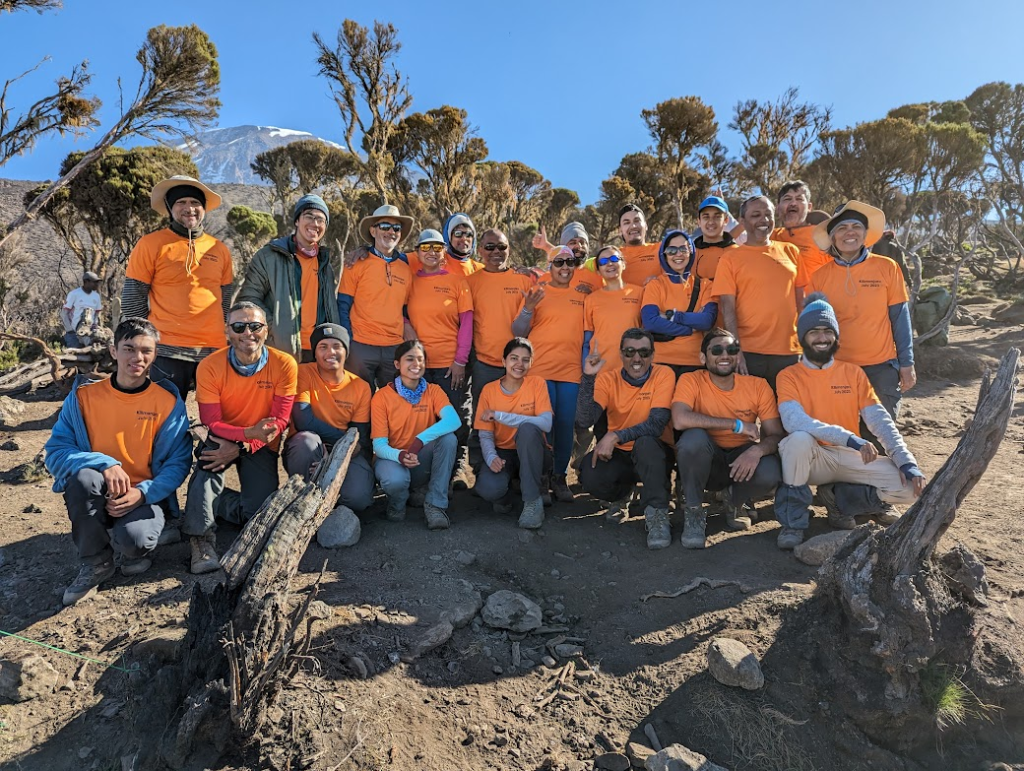
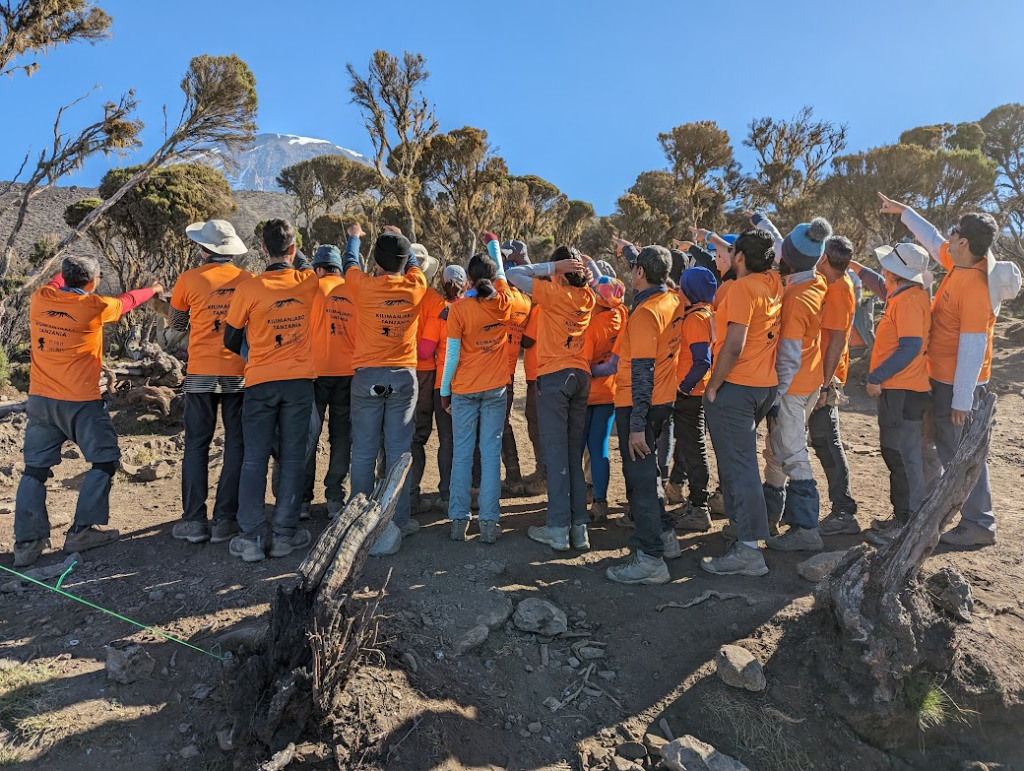

It was a distance of 13.5 km and a gradual descent through the rain forest.





We reached Mweka Camp (9,900 ft) in about 2 hours.

We had to walk through a lot of slush as we passed through the rainforest on our final descent.

We did not stop but continued on to Mweka Gate (5,380 ft) which we reached by 2.30 pm.


At the gate, we had people who washed our shoes and sticks for $2 each. It was worth it, because our shoes were covered in slush. A bus picked us up at Mweka Gate and we were at Panama Garden resort in Moshi at about 3.30 pm.
All the other members came by about 5 pm.
Luis Erasmi had set up a celebratory dinner at El Rancho, surprisingly the name of an Indian restaurant. We went there at 7.30 pm. As usual, they were short staffed and it took a long time for them to get food. We finished at 10.00 pm and came back to the hotel. The food was decent, but having all 29 people celebrate together was a lot of fun.
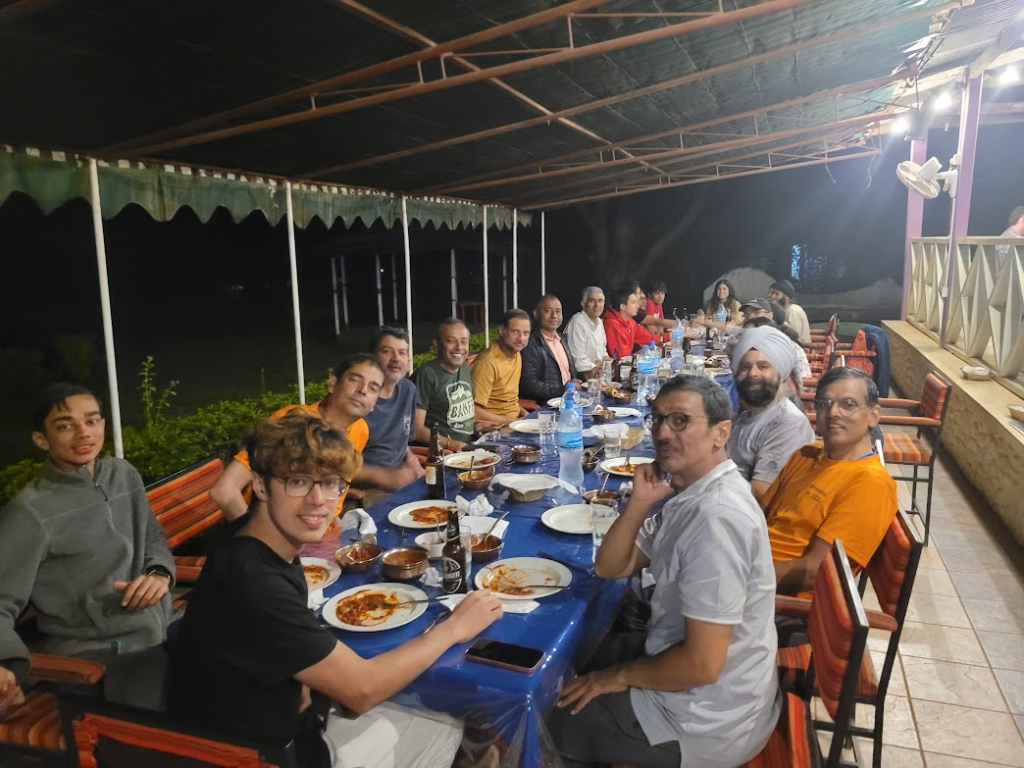
We settled the collections for tips and the journey back to Nairobi.
We slept really well, ready for the next phase of our trip, to Nairobi where we would be a part of an 89 people group from IIT Kanpur, 1990 graduating batch, who would be doing the Kenya safari together.
Summary
Climbing Kilimanjaro was an exciting experience. With appropriate training, adequate acclimatization and adequate safety measures, the summit attempt can be completed successfully. It was great to reach the “The Roof of Africa”.








